The Royal Invitation: Where Contemporary Art Enters Ancient Traditions
In the contemporary art world, few opportunities arise to create work destined for royal collections while simultaneously engaging with millennium-old artistic traditions. When Khalid Juman, CEO of Pico Bahrain, extended an invitation to contribute to the Mara'ee Animal Production Show's Art Exhibition under the esteemed patronage of His Majesty King Hamad Bin Isa Al Khalifa, I found myself at a fascinating crossroads.
This wasn't merely a commission—it was an invitation to dialogue between digital innovation and the profound mathematical beauty inherent in Islamic art, between contemporary mosaic techniques and the arabesque patterns that have graced royal collections from Cordoba to Isfahan for centuries.
The King's Portrait:
Mosaic Majesty: A Tribute to the King
The Mathematical Poetry of Islamic Art: A Digital Artist's Discovery
As someone whose artistic journey has taken me from the vibrant street art of Rio de Janeiro to the geometric precision or shattered unity of Japanese design, from the Renaissance masters of Italy to the contemporary galleries of London, I've always been drawn to the underlying mathematical structures that unite diverse cultural expressions. Yet Islamic art presented a unique challenge that would fundamentally reshape my understanding of digital mosaics.
The intricate geometric patterns of arabesque art aren't merely decorative—they're profound mathematical expressions of infinity, unity, and divine proportion. Traditional Islamic artists developed these patterns as meditative practices, where each geometric element related to the whole through precise mathematical relationships. As a digital artist working with algorithmic processes to create mosaics, I recognized a kinship between my computational methods and these ancient mathematical traditions.
The challenge became: how does one respectfully integrate contemporary digital mosaic techniques with the sacred geometry of Islamic art without appropriation, while creating works worthy of a royal collection?
Cultural Reverence in Practice: Beyond Technique
My approach to this project was informed by deep respect for the cultural and spiritual significance of Islamic artistic traditions. Having explored cultural expressions from the traditional patterns of West African textiles to the intricate geometric designs of Persian miniatures, I understand that engaging with any cultural artistic tradition requires humility, research, and genuine reverence.
The process began with extensive study of classical Islamic geometric patterns, understanding not just their visual appearance but their underlying mathematical principles and spiritual significance. This wasn't about borrowing surface aesthetics—it was about comprehending the philosophical framework that gives these patterns their profound meaning.
Each geometric element in Islamic art serves a purpose beyond decoration: to reflect the unity underlying apparent diversity, to suggest the infinite through the finite, and to create spaces for contemplation. My digital mosaic technique needed to honor these principles while bringing something genuinely contemporary to the dialogue.
The Technical Journey: Where Ancient Geometry Meets Digital Innovation
The Royal Portrait: A Study in Contemporary Regality
Creating His Majesty's portrait required developing an entirely new approach to digital mosaics. Traditional portraiture in royal collections often emphasizes individual character and presence. Islamic artistic traditions, however, tend toward geometric abstraction and pattern. The challenge was creating a work that honored both traditions while remaining authentically contemporary.
The mathematical solution emerged through layered complexity:
Layer One: The foundation materialized on synthetic stone using Bois Art Shop's UV printer—a substrate that could support the dimensional complexity required for the piece.
Layer Two: Detailed color work emerged from Fotokinisi's Giclée 12-color printer, providing the precise color relationships necessary for effective mosaic work.
The Hand Process: Here, ancient craftsmanship met contemporary technique. Each tile in the second layer was individually hand-cut and hand-painted, with metallic art paper details created through laser-cutting technology. This hybrid approach allowed for the precision required by Islamic geometric principles while maintaining the individual character essential to portraiture.
Dimensional Development: Acrylics and Relief Paint created three-dimensional effects that brought the portrait to life, while Giusto Manetti Gold leaf (KTS 32 3/4 100x100 Th. 24gr Light pressed) provided the luminous quality traditionally associated with royal portraiture across cultures.
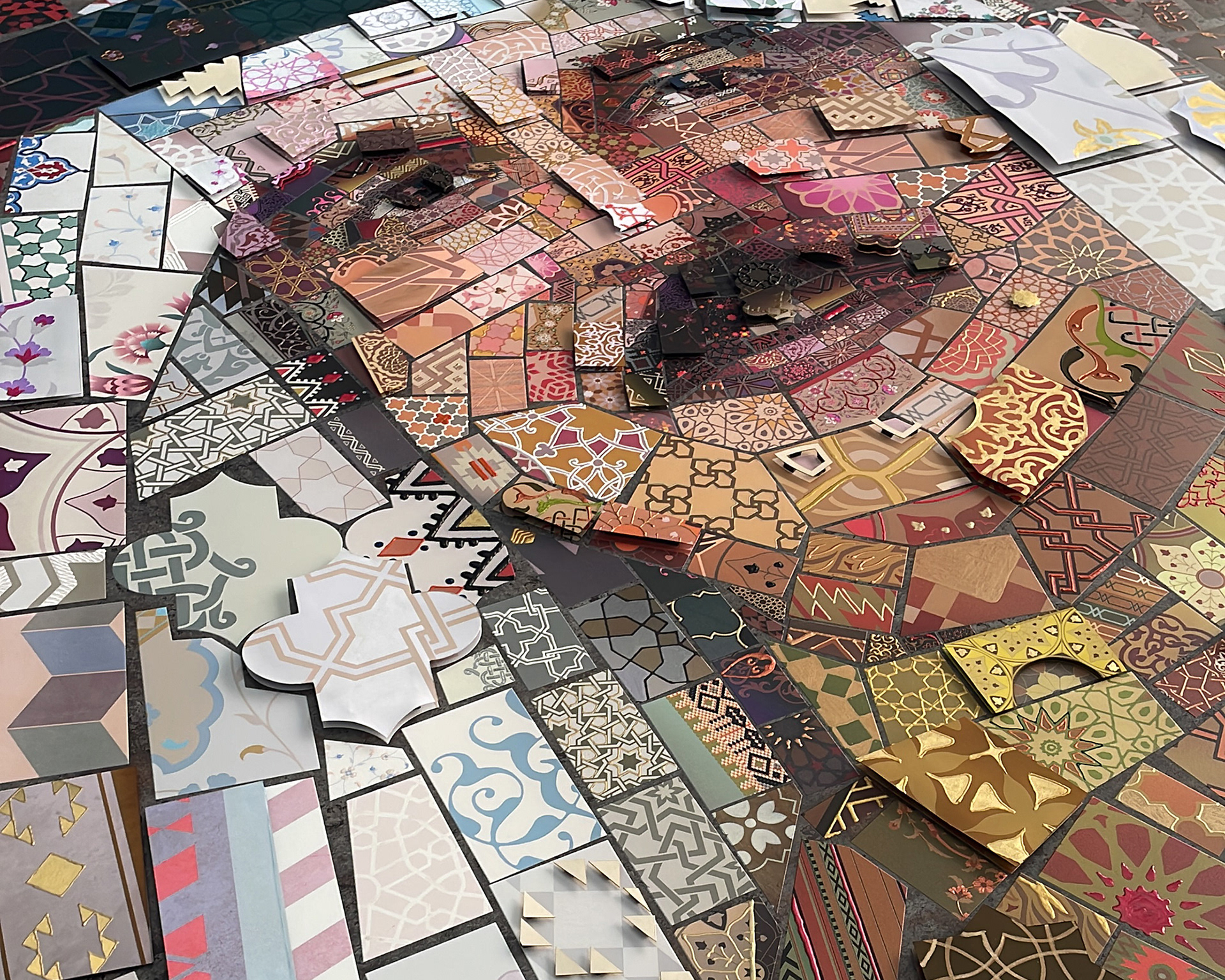
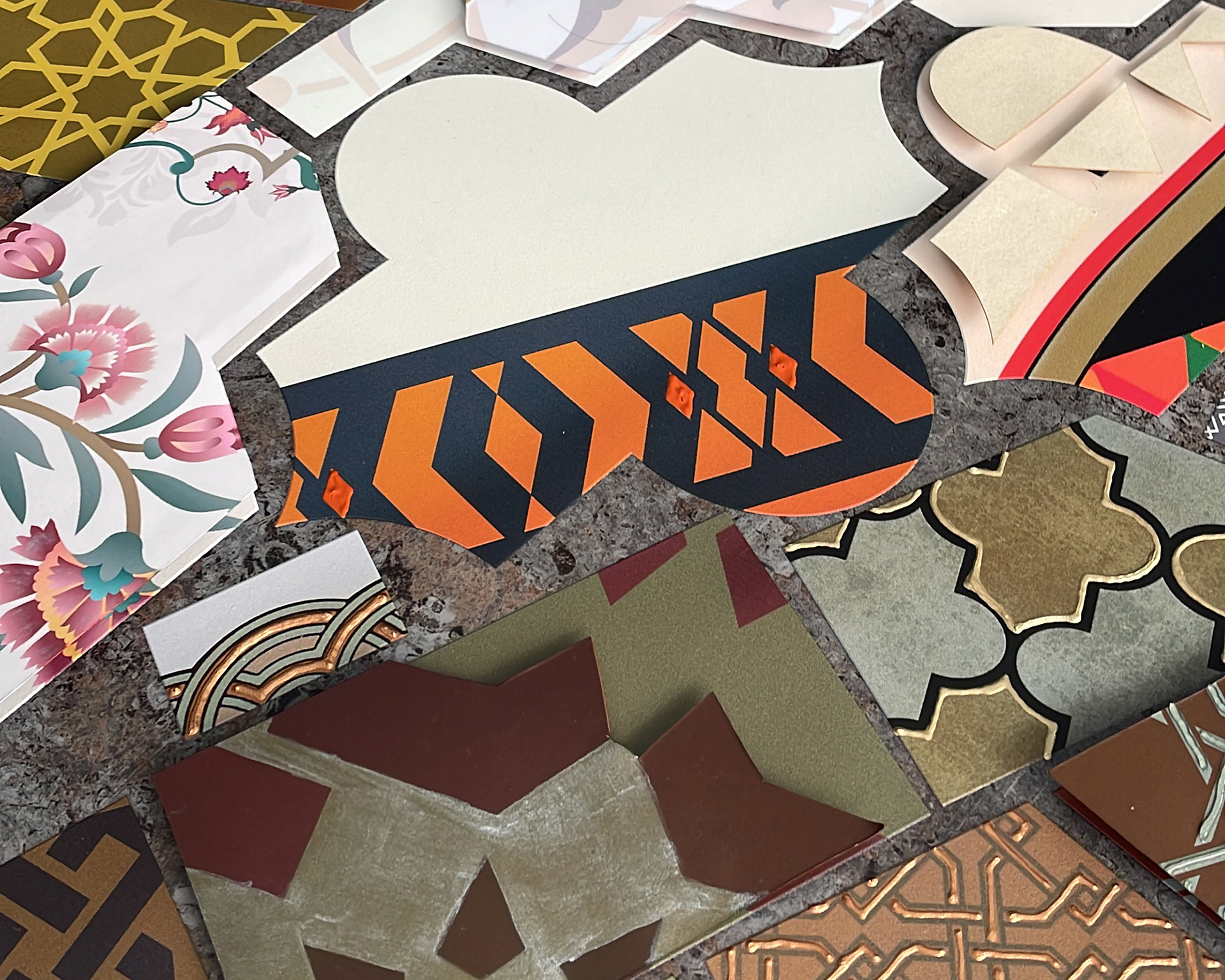
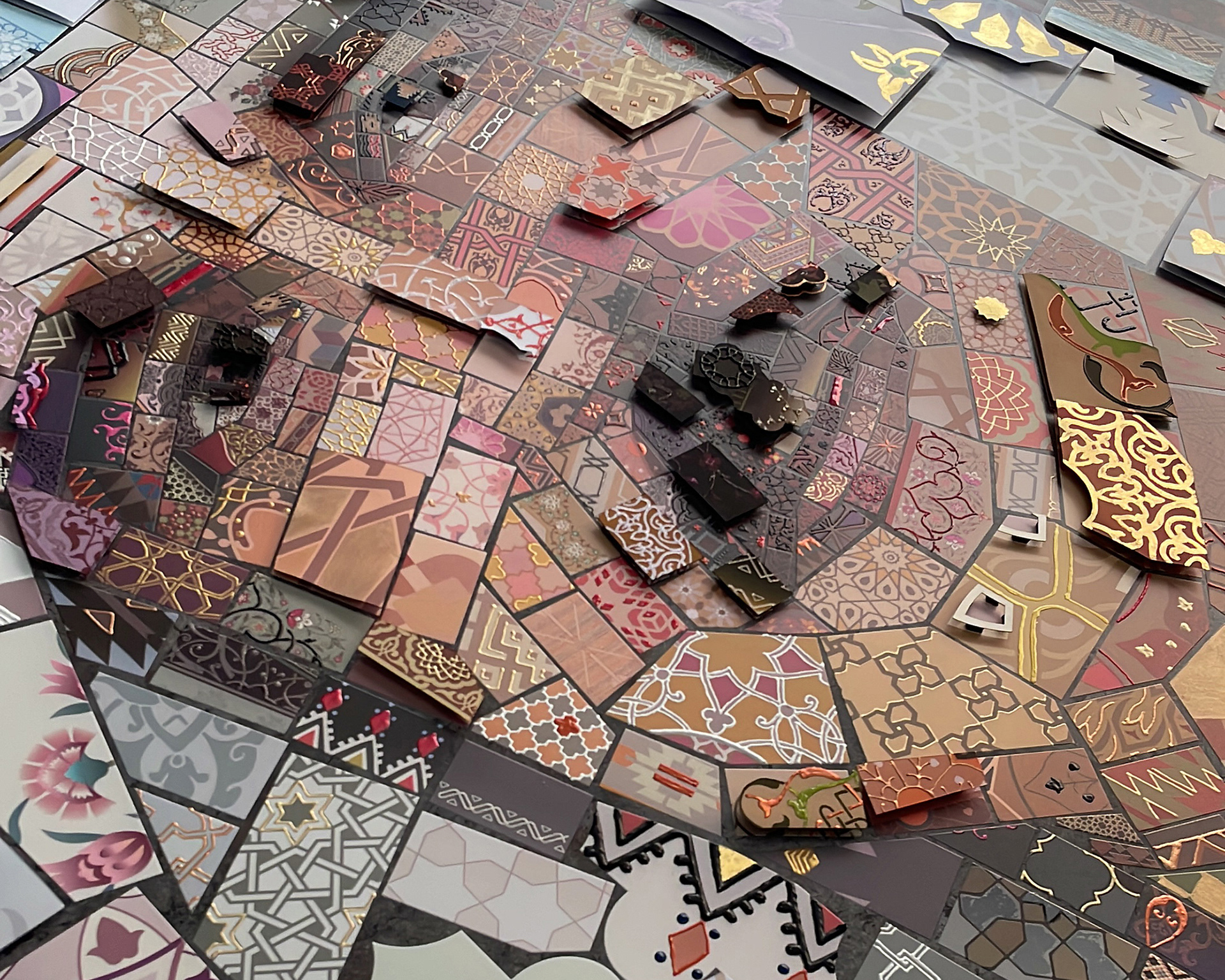
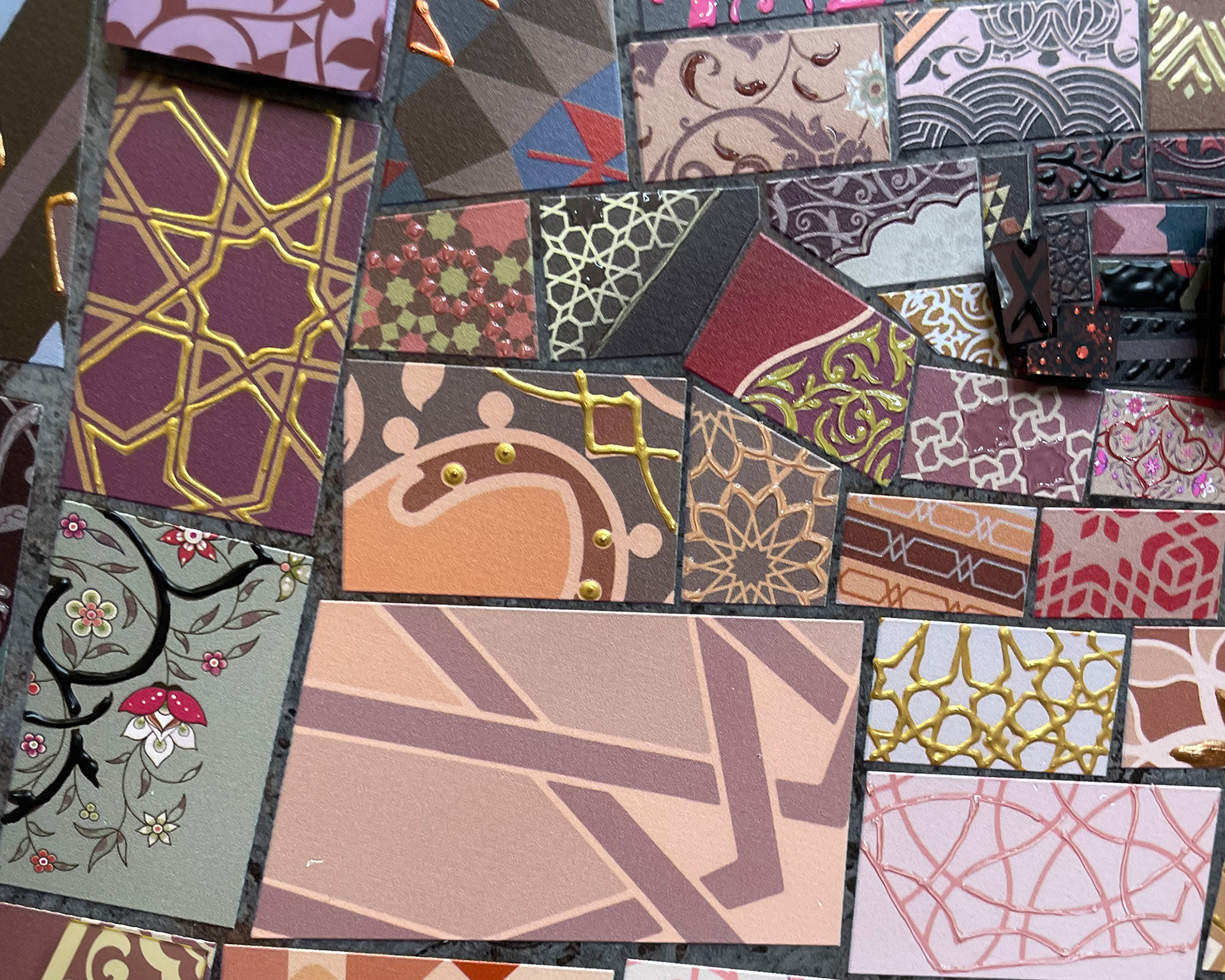
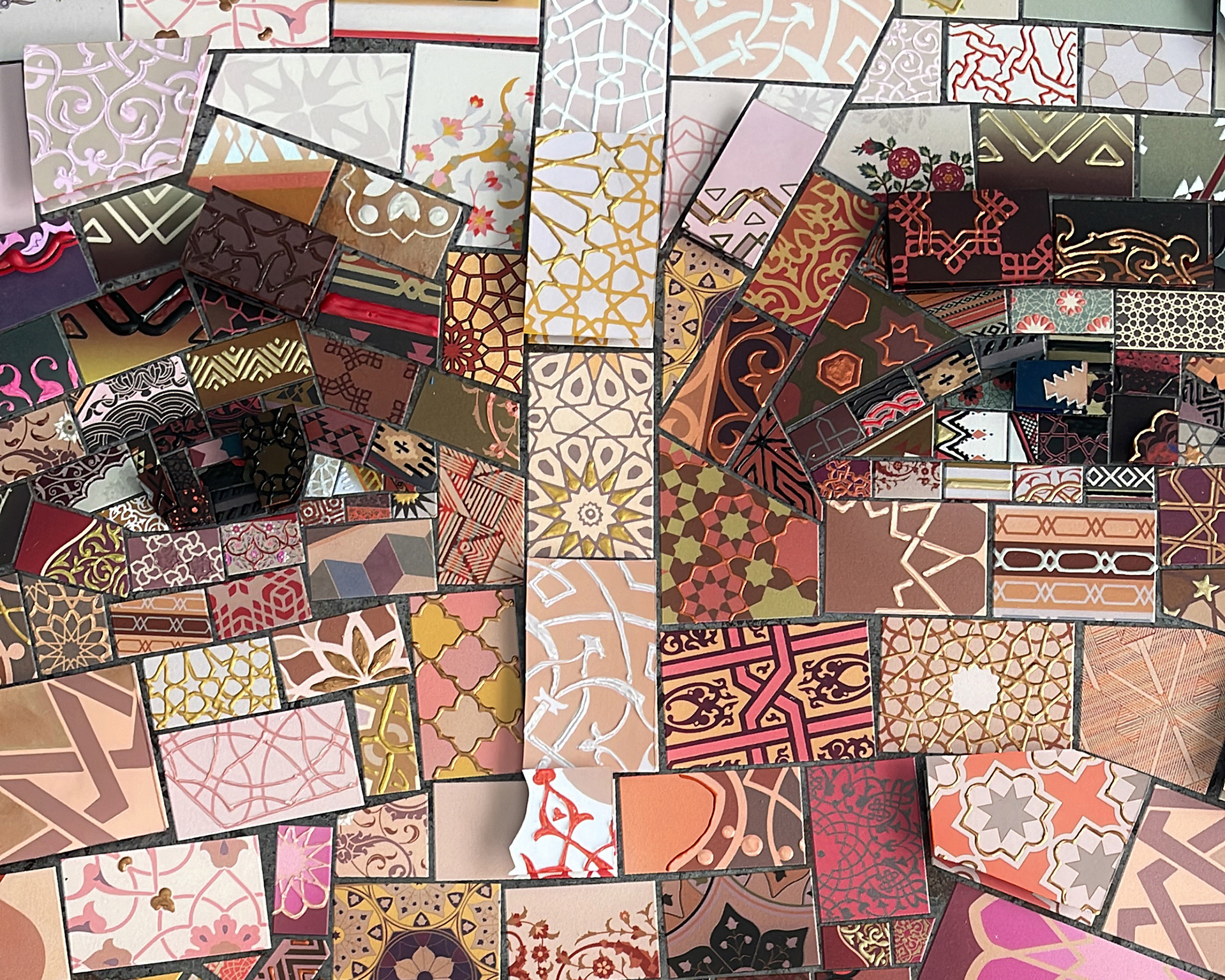
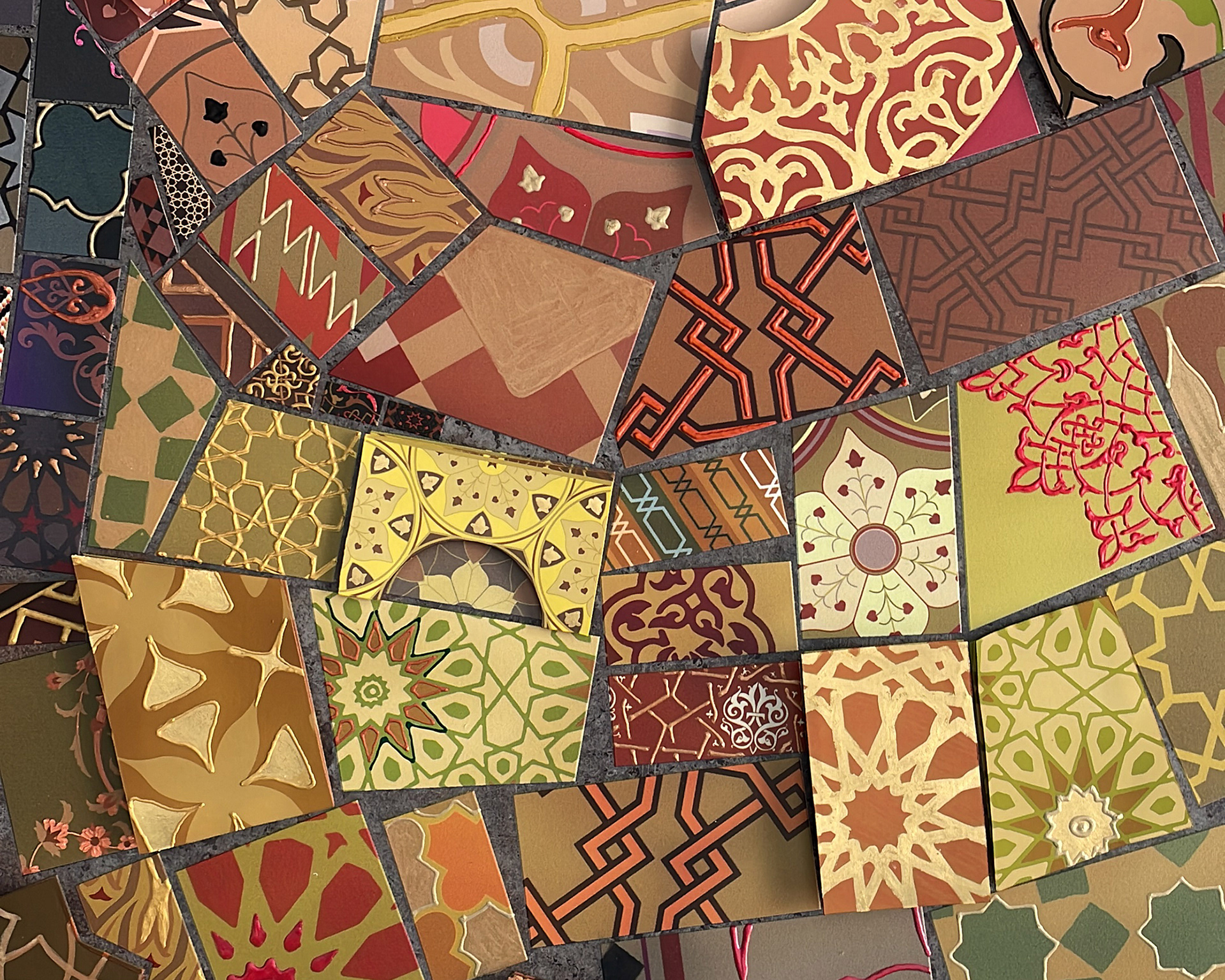

The Animal Collection: Where Desert Meets Digital
The companion pieces—an Arabic horse, Bahraini falcon, and antelope—presented different challenges. These works needed to capture the essential character of each animal while integrating them seamlessly with traditional Arabic patterns.
Each animal was constructed using Giclée 12-color printing on 100% cotton canvas, transformed through hand-painting that honored both the individual character of each creature and the mathematical precision of Islamic geometric design. The result was a series that felt simultaneously contemporary and timeless, digital and handcrafted.
Stallion’s Serenity: Mosaic Melody of Equine Grace
The Broader Context: Royal Collections and Contemporary Art
This project exists within the fascinating evolution of royal art patronage in the contemporary era. From the Medici collections that shaped Renaissance art to the contemporary acquisitions of royal families worldwide, patronage has always played a crucial role in pushing artistic boundaries while preserving cultural heritage.
His Majesty King Hamad Bin Isa Al Khalifa's support for this exhibition reflects a sophisticated understanding of how contemporary art can engage with traditional forms without diminishing either. The resulting works join a tradition of royal collections that include everything from classical Islamic manuscripts to contemporary installations—collections that function as cultural bridges between past and present.
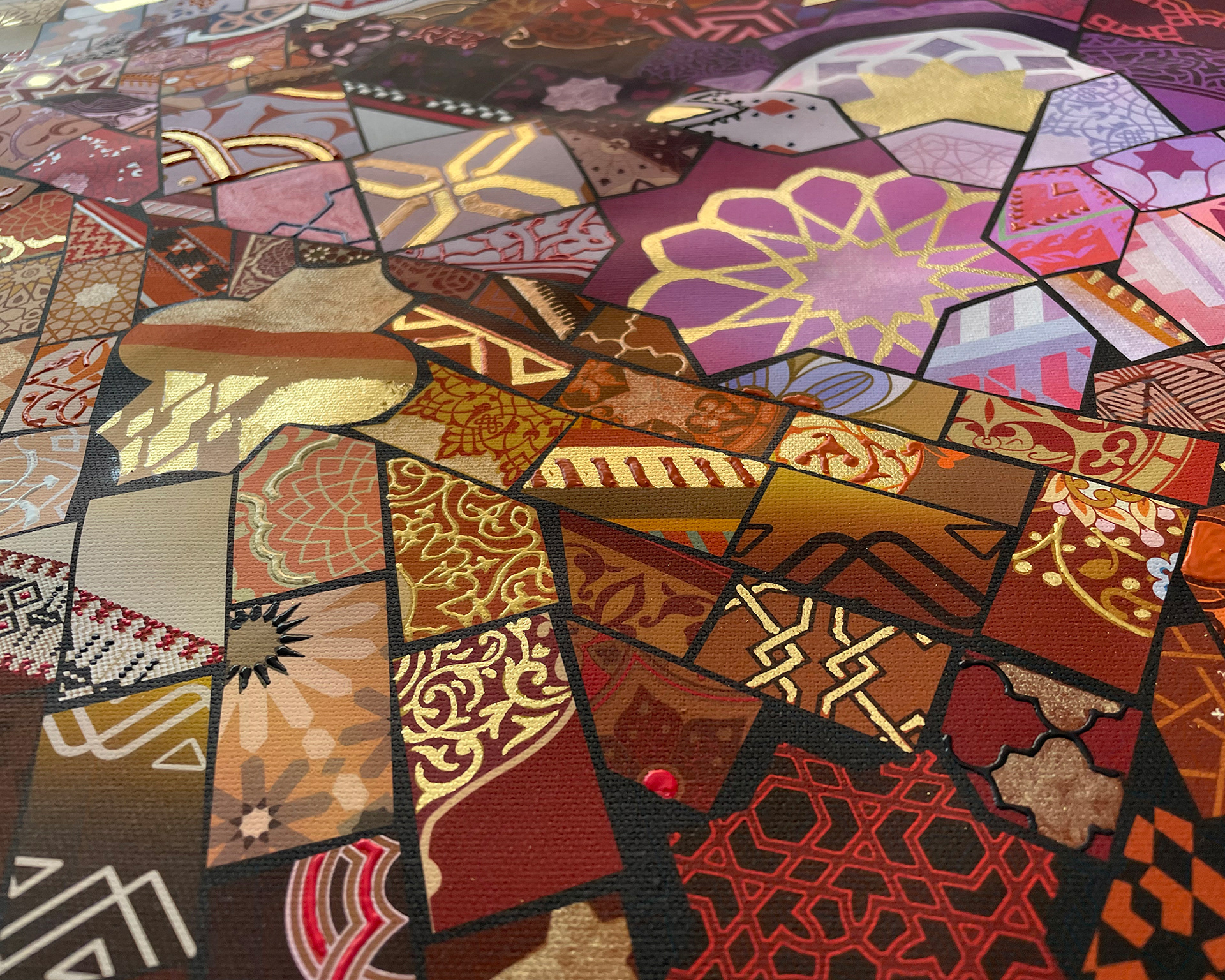
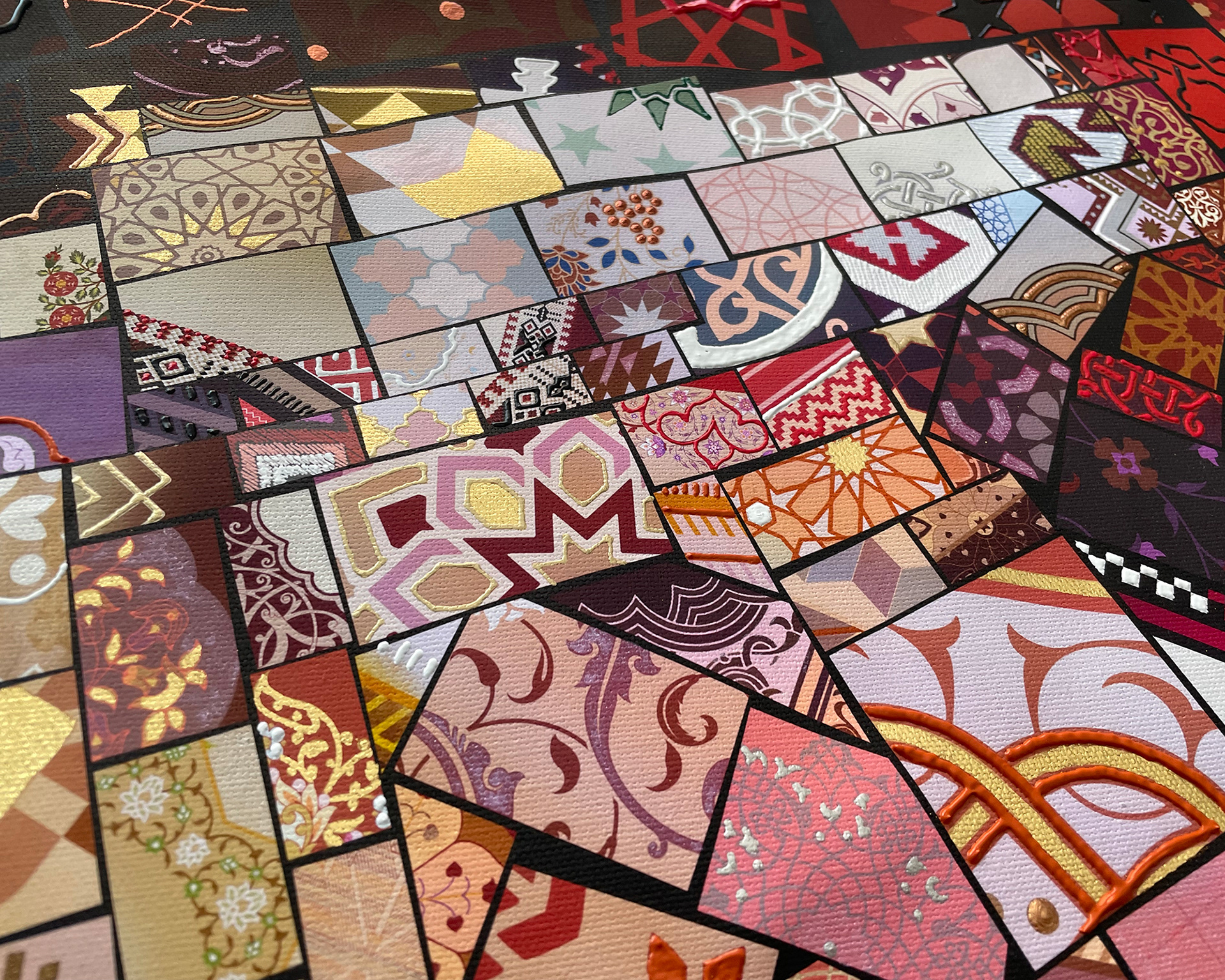
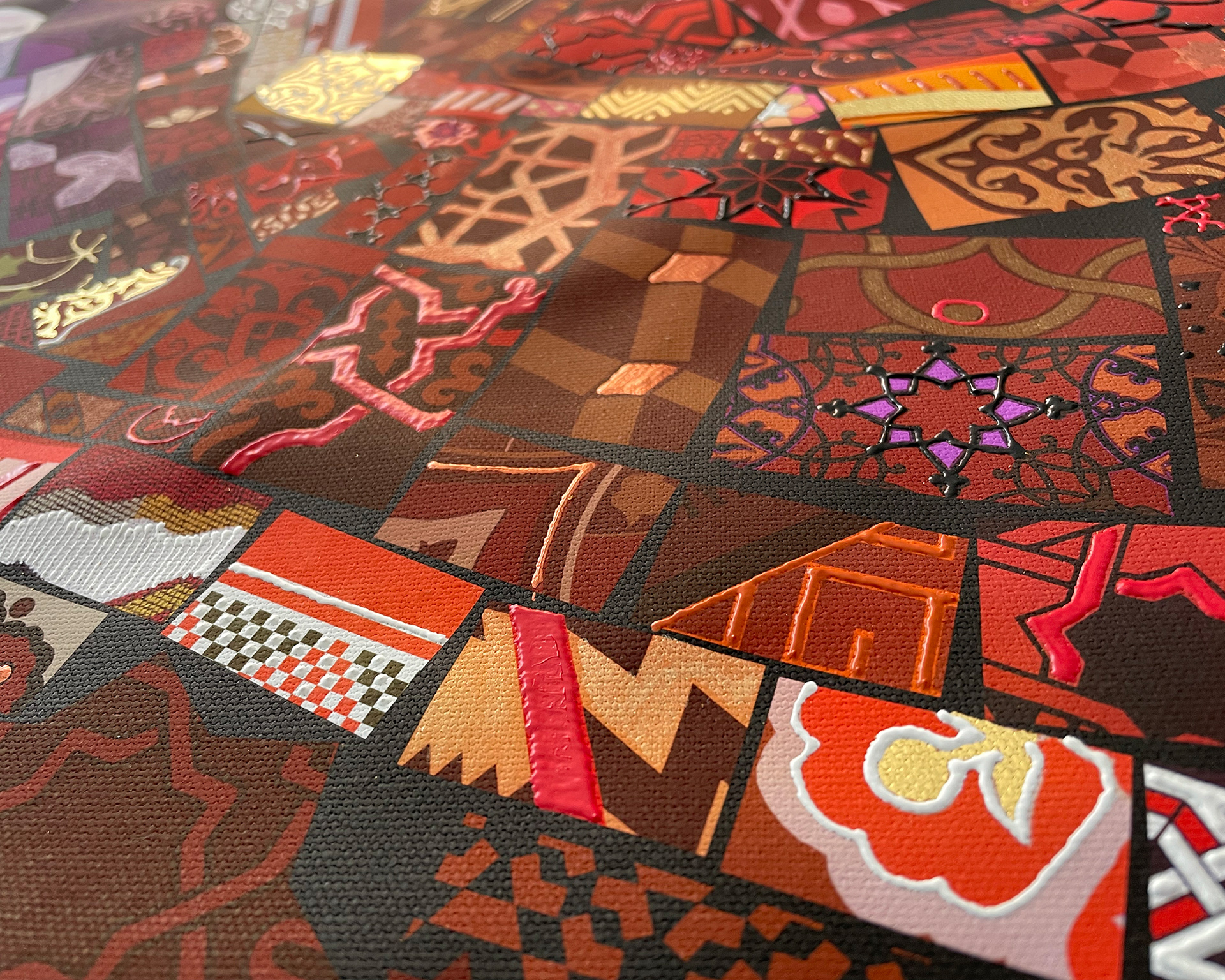
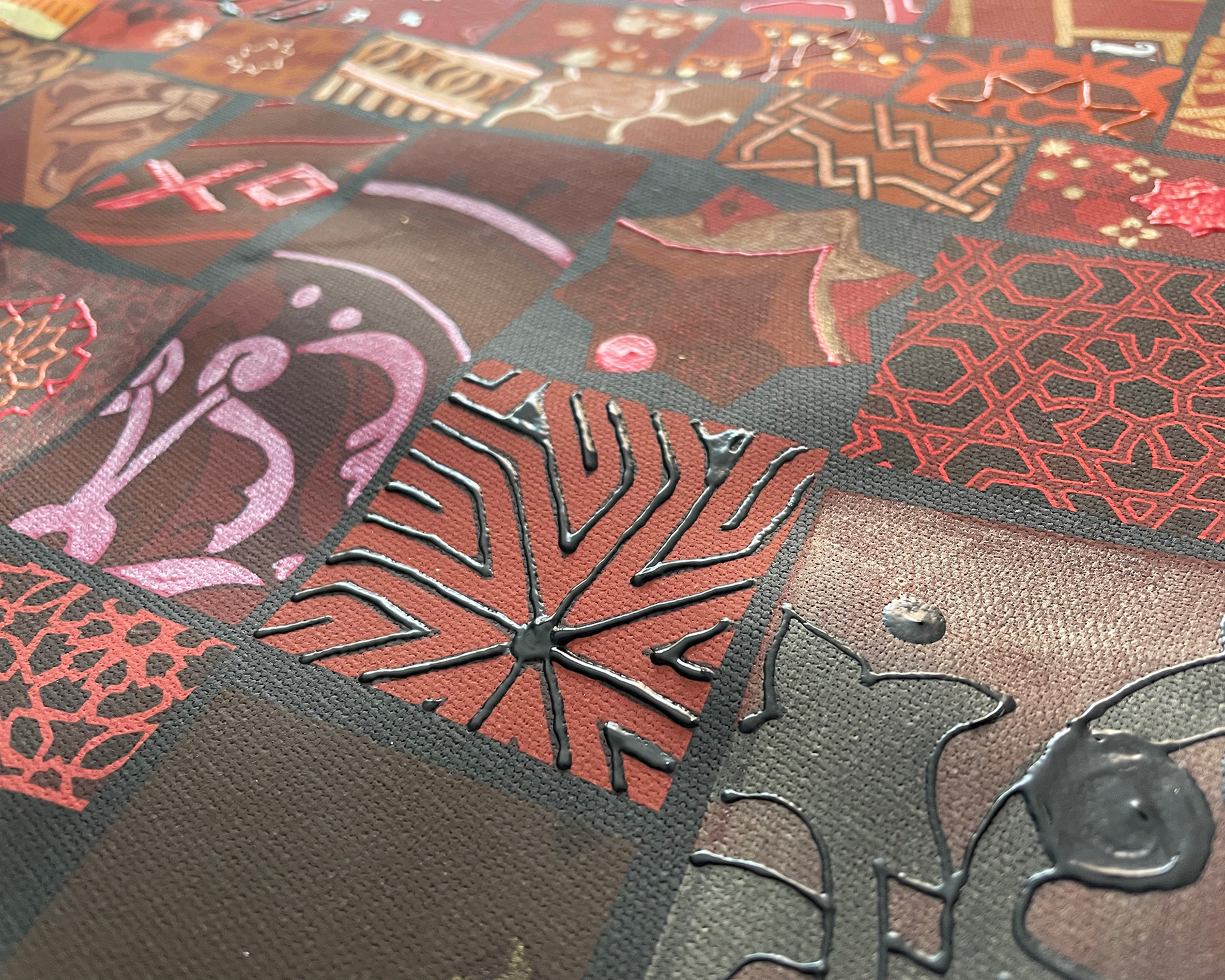
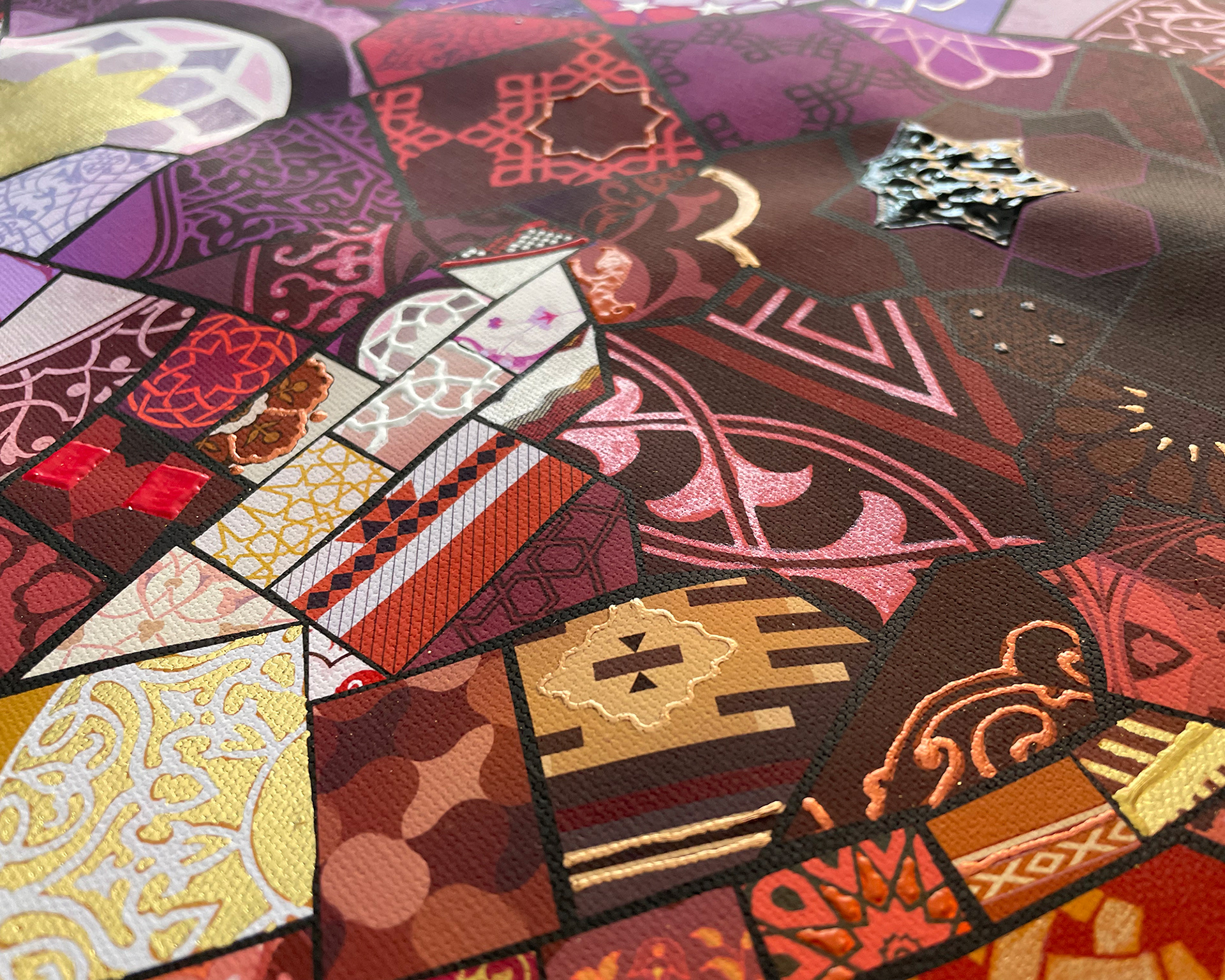
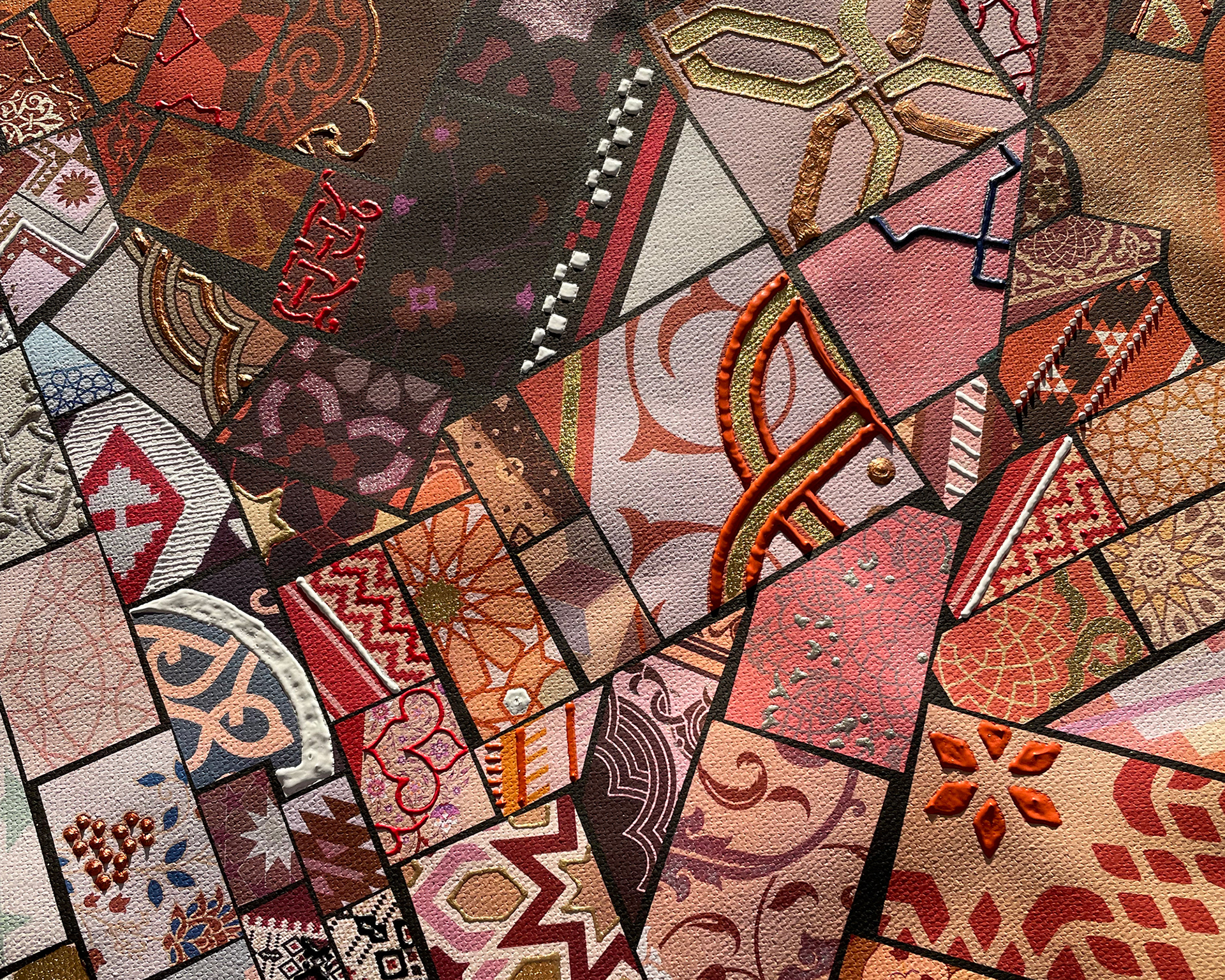

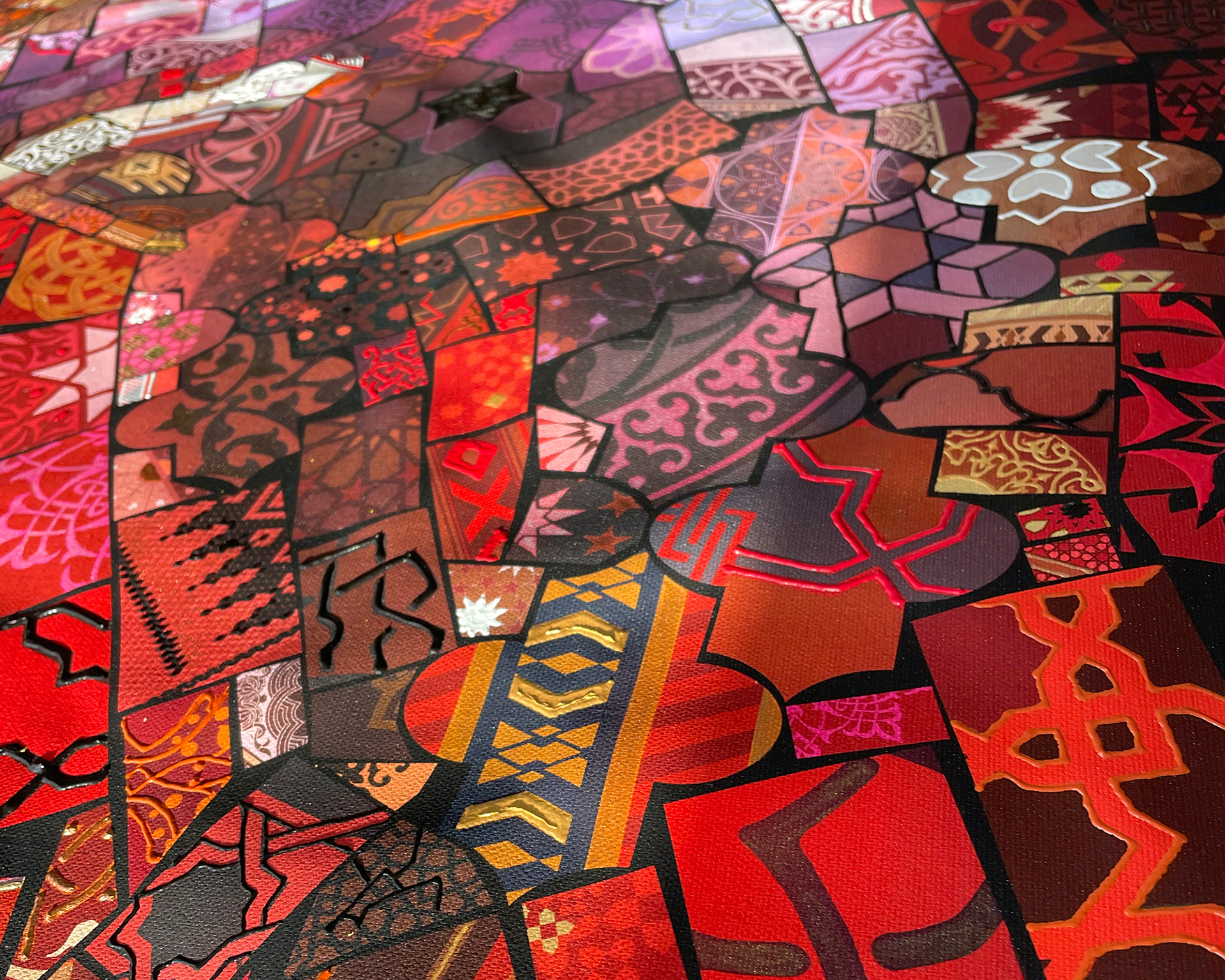
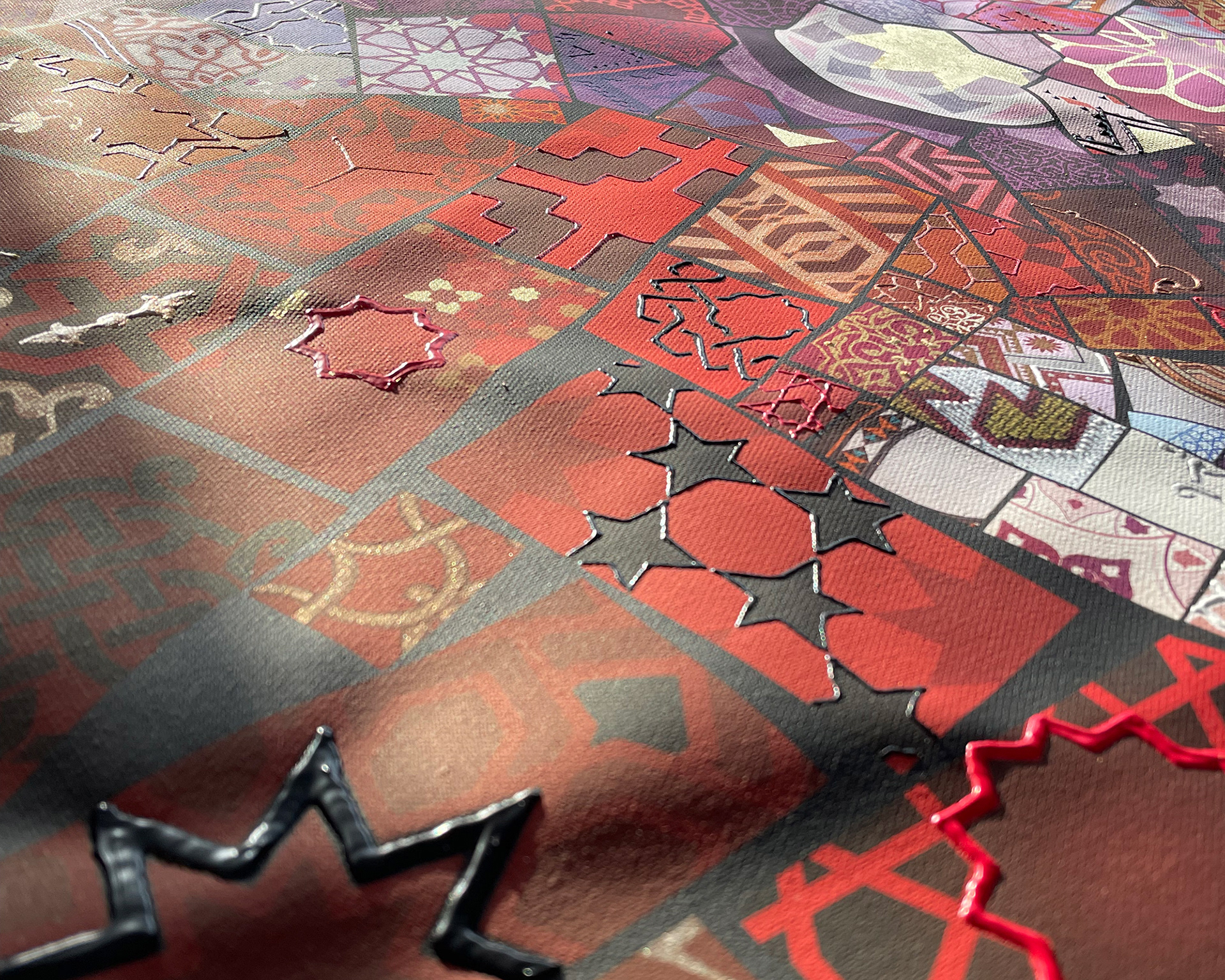
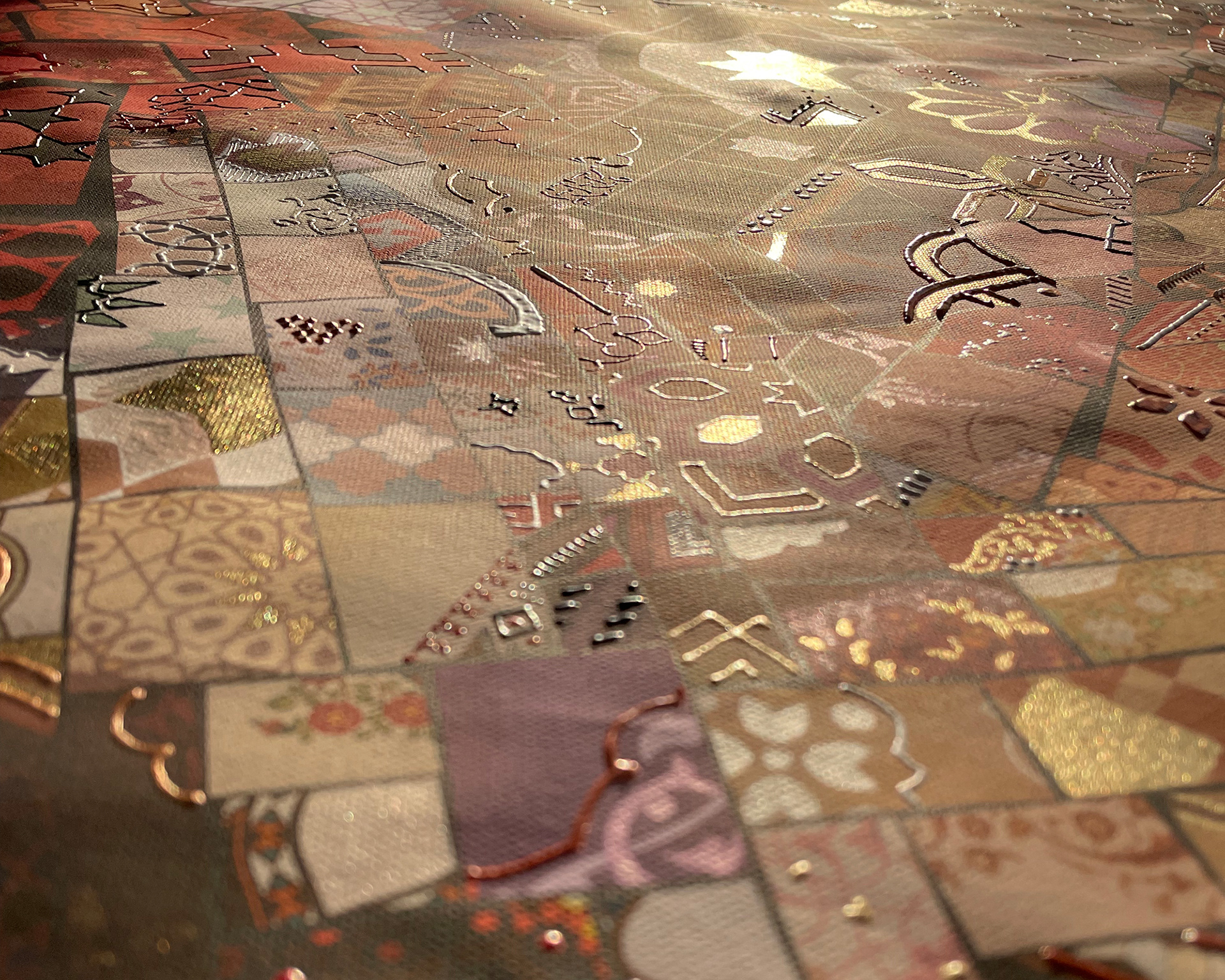
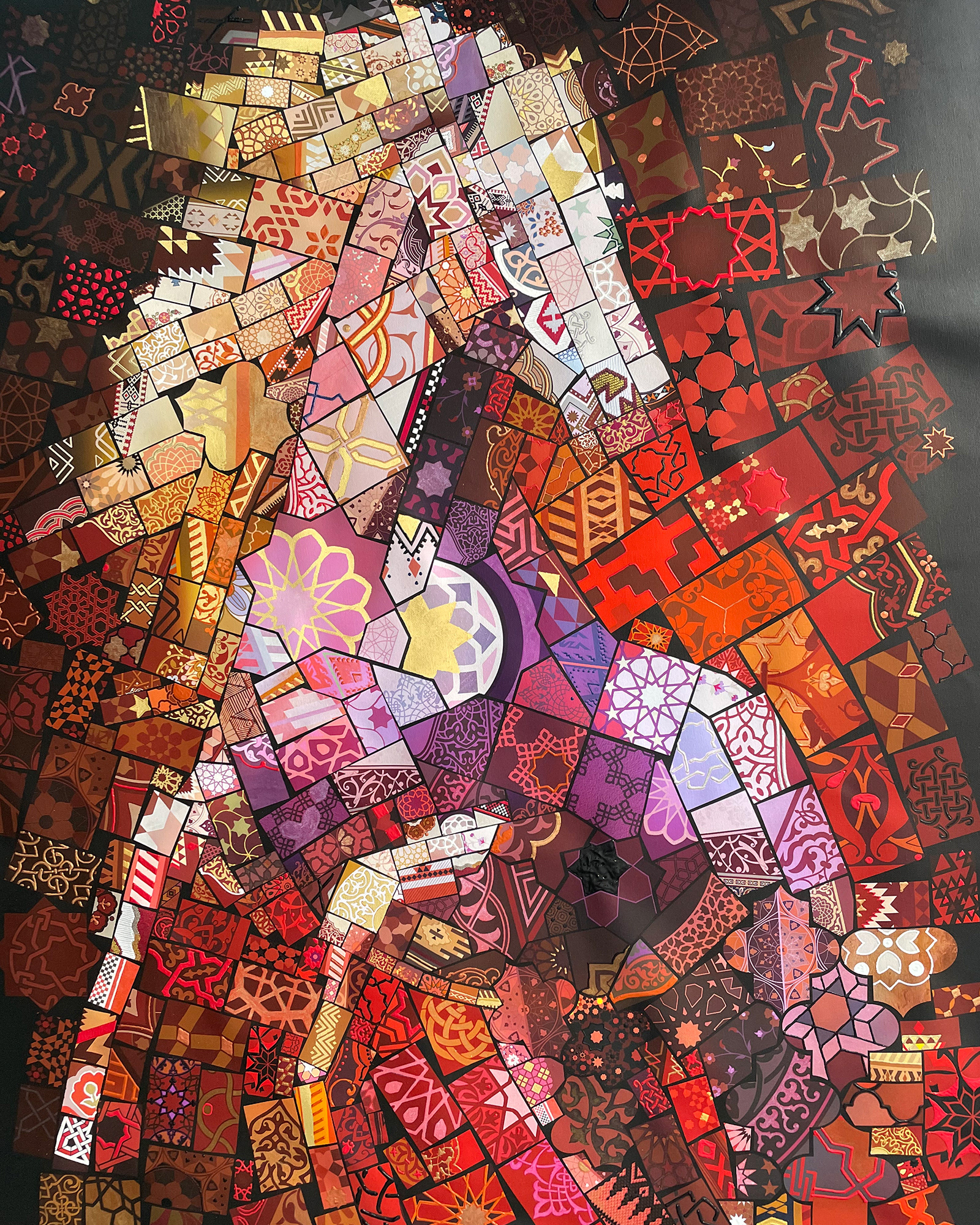
Technical Innovation in Service of Cultural Dialogue
The mathematical challenges of this project extended beyond aesthetic considerations. Islamic geometric patterns follow specific proportional relationships that create their characteristic visual harmony. Translating these into digital mosaic format required developing new algorithms that could maintain these proportional relationships while adapting to the pixel-based structure of digital imagery.
The solution involved creating hybrid digital-analog processes where computer-generated elements informed hand-crafted details, ensuring that the final works maintained both computational precision and human touch. This approach reflects my broader artistic philosophy: technology serves culture, not the reverse.
Winged Whispers: Falcon’s Flight through Arabic Skies
A Global Perspective: From Bahrain to the World
This project represents one chapter in an ongoing exploration of how contemporary digital art can engage respectfully with diverse cultural traditions. From collaborating with traditional craftspeople in Morocco to studying the geometric principles underlying Japanese temple design, from working with indigenous pattern-makers in Brazil to examining the mathematical underpinnings of British textile traditions, each cultural engagement has enriched my understanding of how mathematics, craft, and spirituality intersect across cultures.
The Bahrain project was particularly meaningful because it allowed for deep engagement with Islamic artistic traditions in their contemporary context, working directly with local collaborators and cultural institutions to ensure authenticity and respect.
Legacy and Learning: What Royal Commissions Teach Contemporary Artists
Working under royal patronage brings specific responsibilities that extend beyond the creation of beautiful objects. These works will likely outlive their creator, becoming part of cultural heritage that speaks to future generations about our contemporary moment's artistic capabilities and cultural values.
The technical innovations developed for this project—particularly the hybrid digital-analog processes and the mathematical approaches to cultural pattern integration—have applications far beyond this single commission. They represent new possibilities for how contemporary artists can engage with traditional forms while contributing something genuinely new to ongoing cultural conversations.
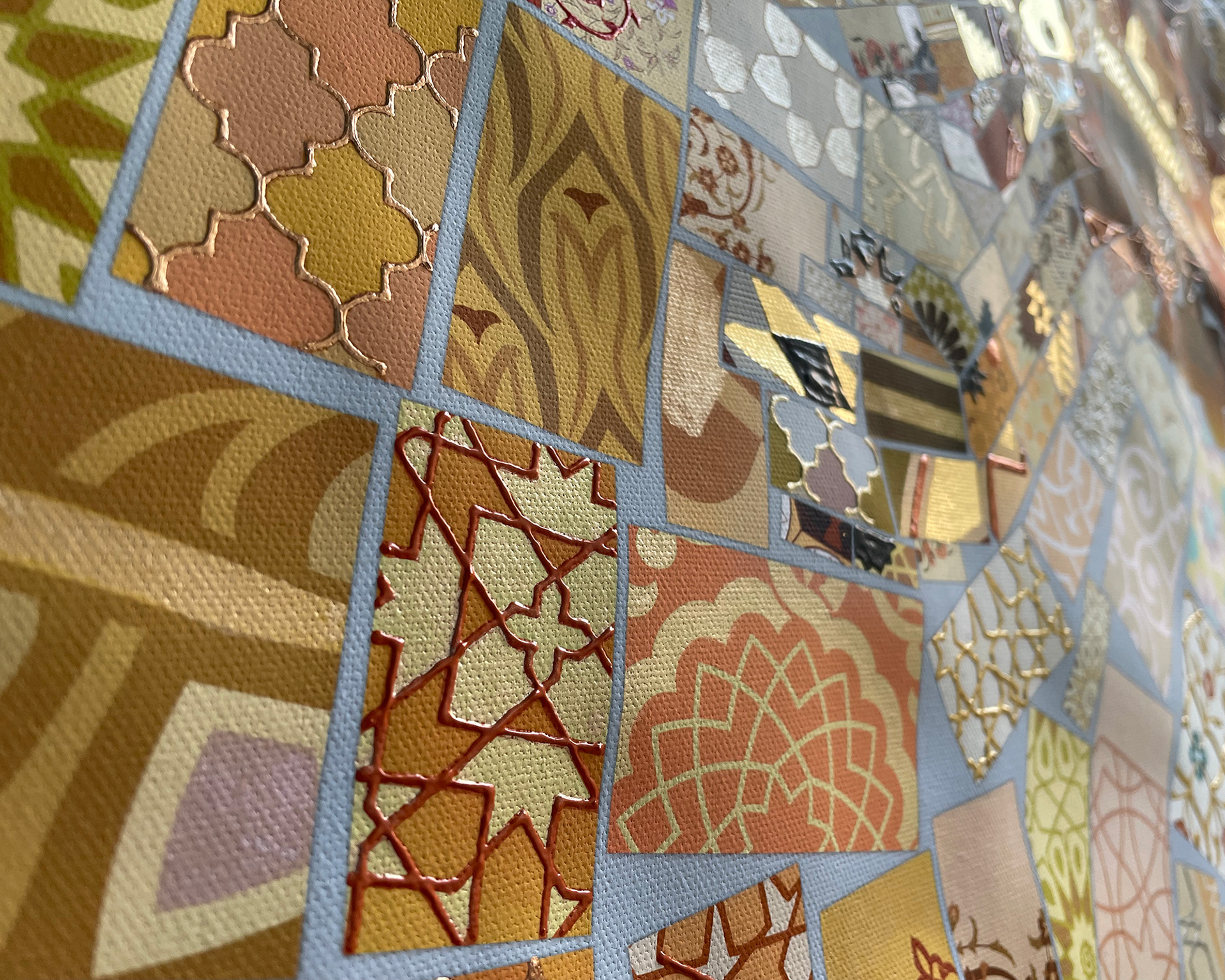
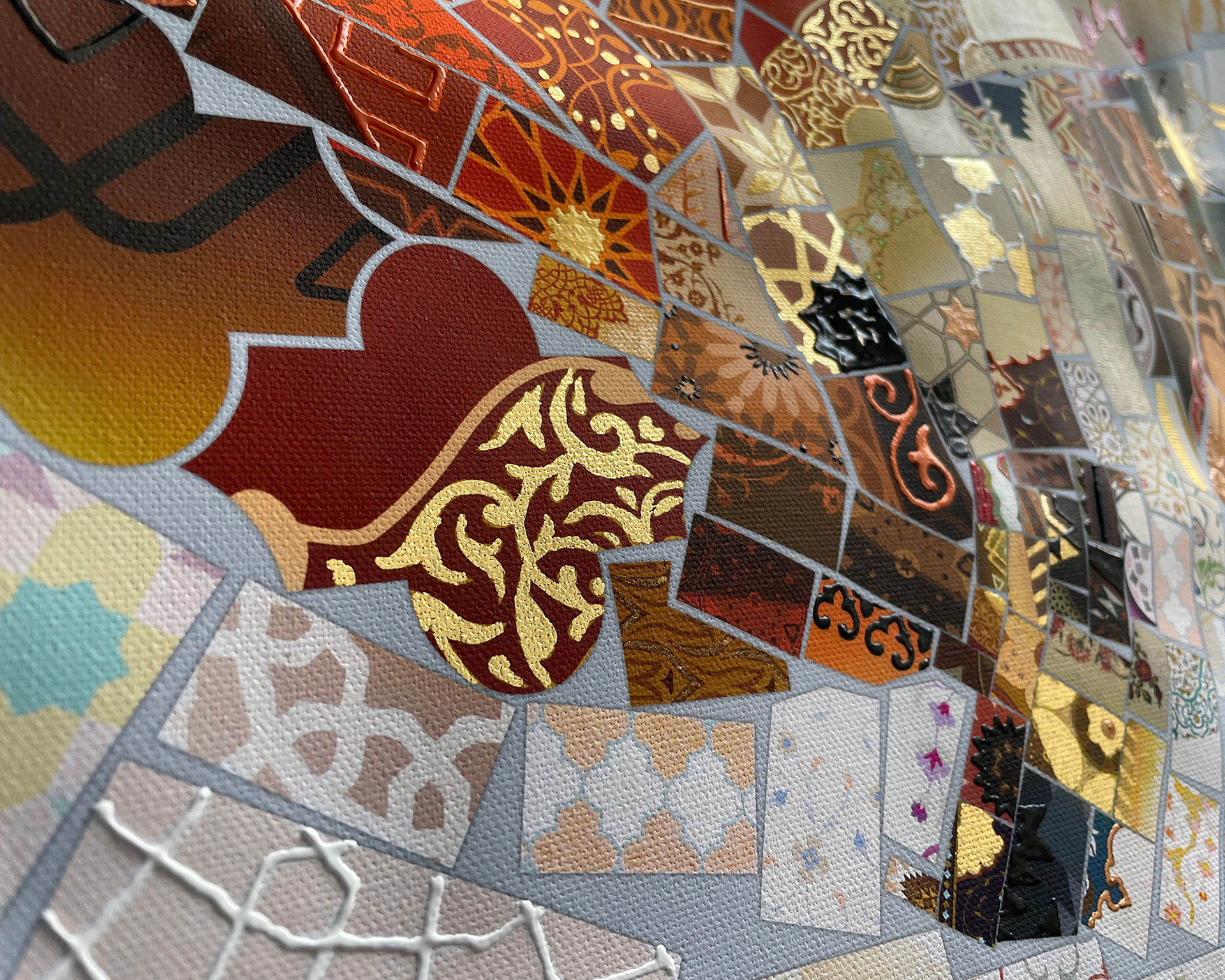
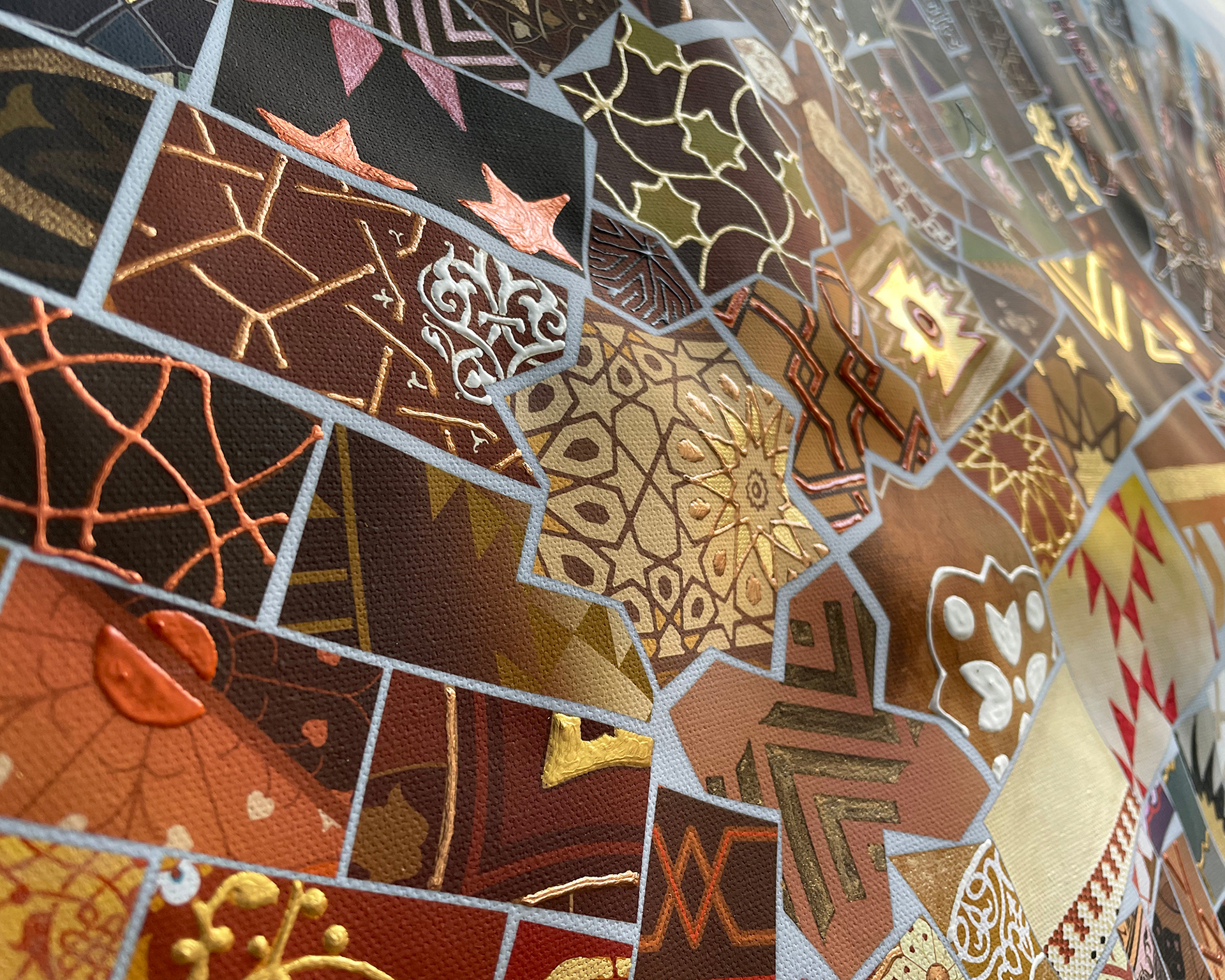
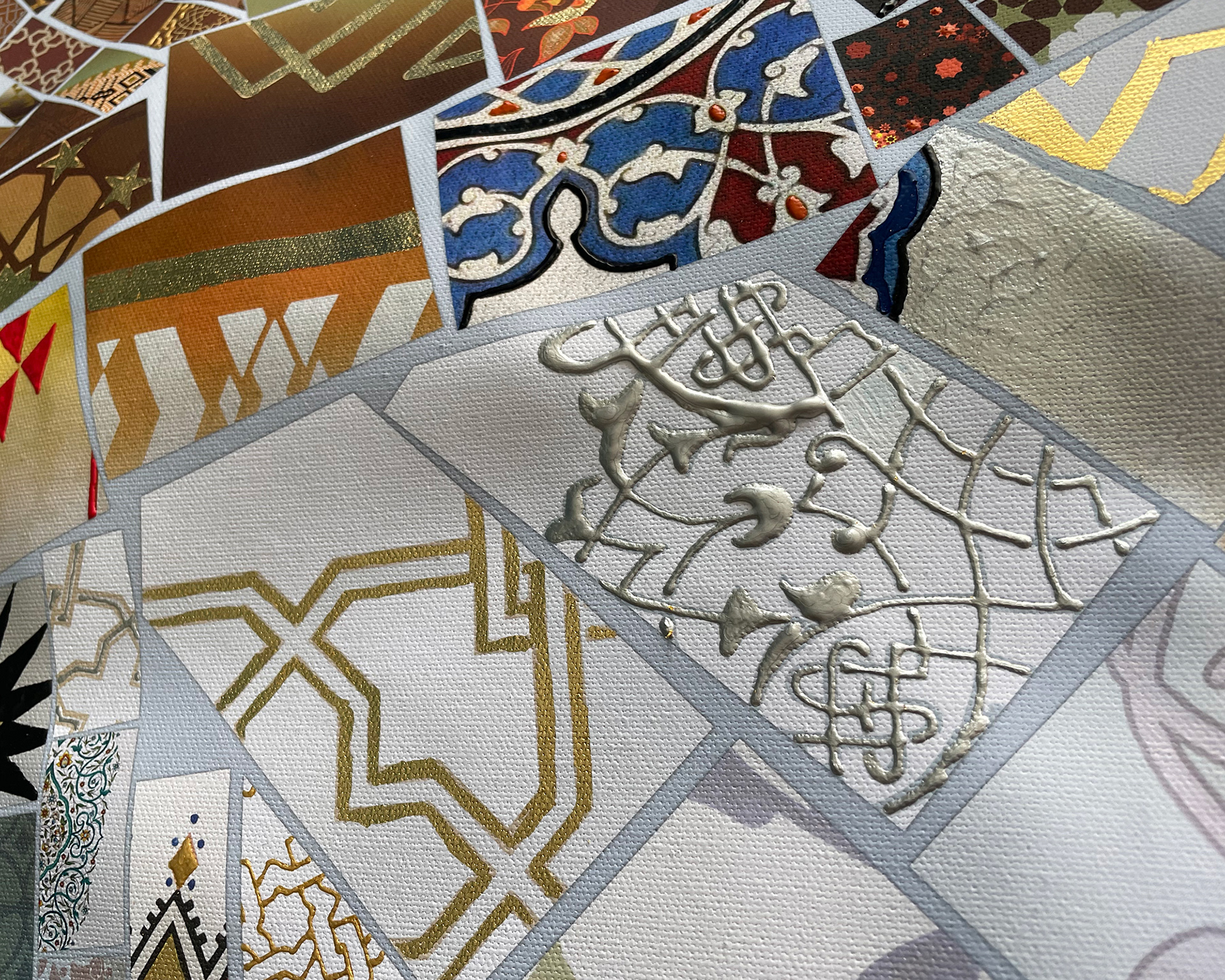

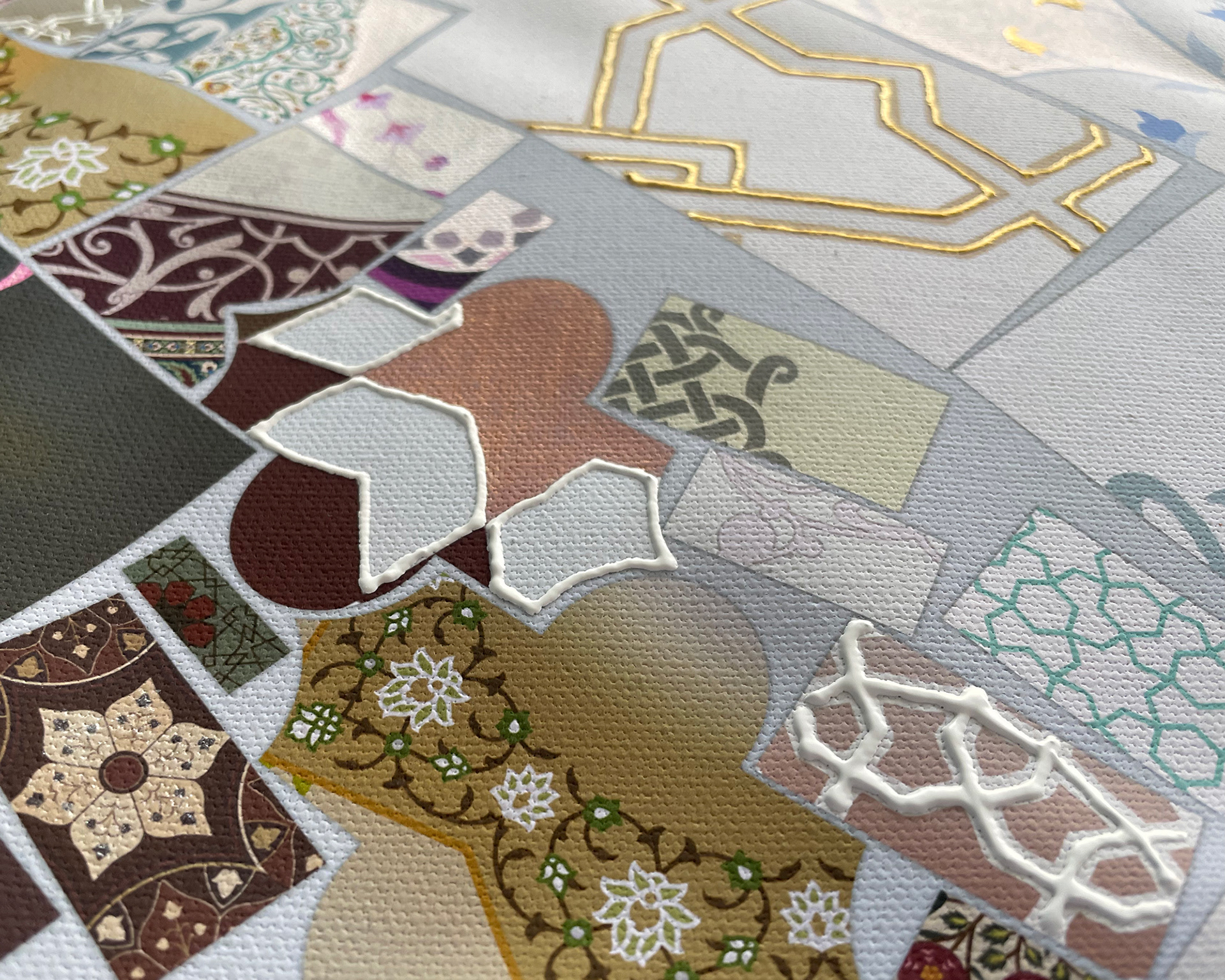
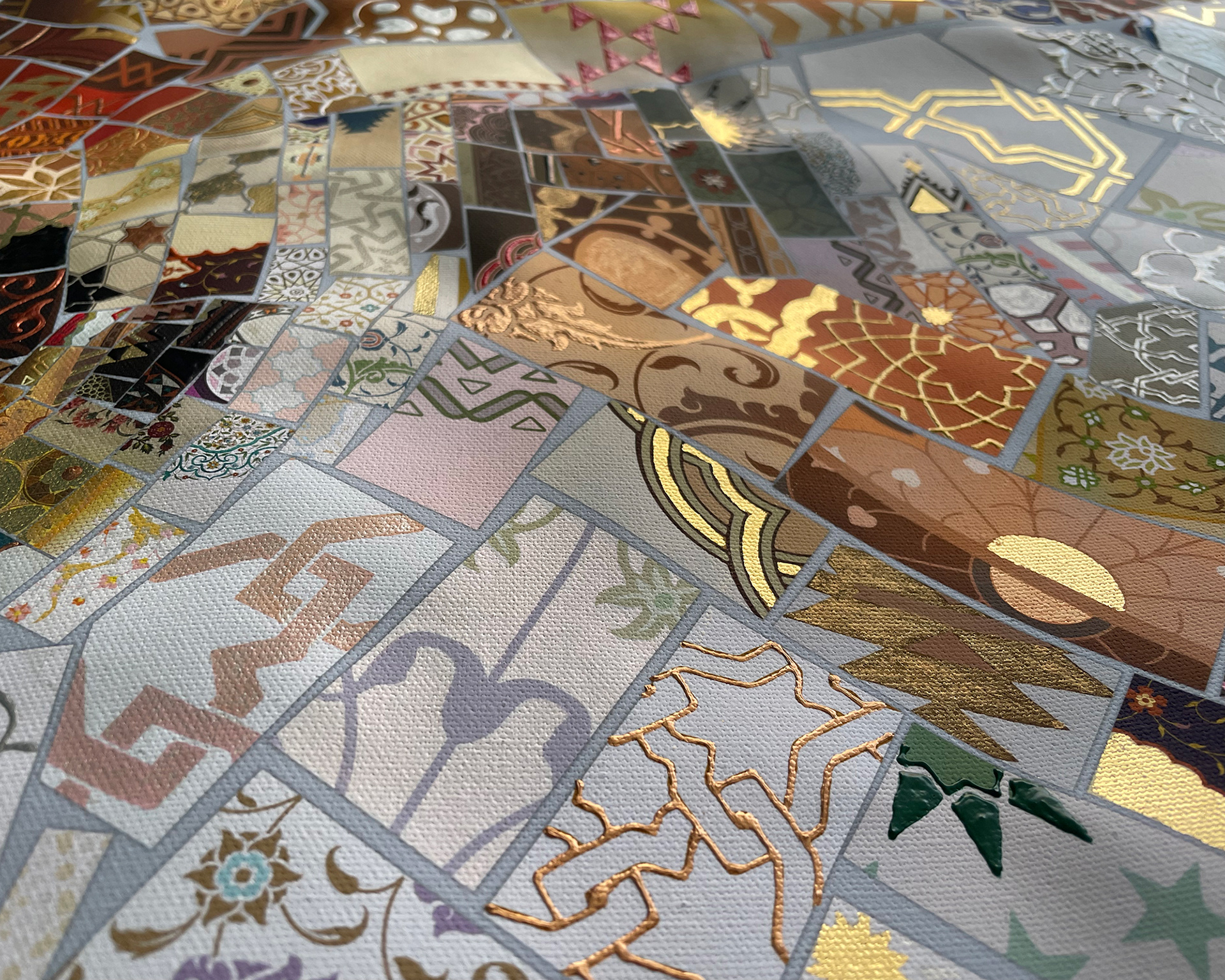
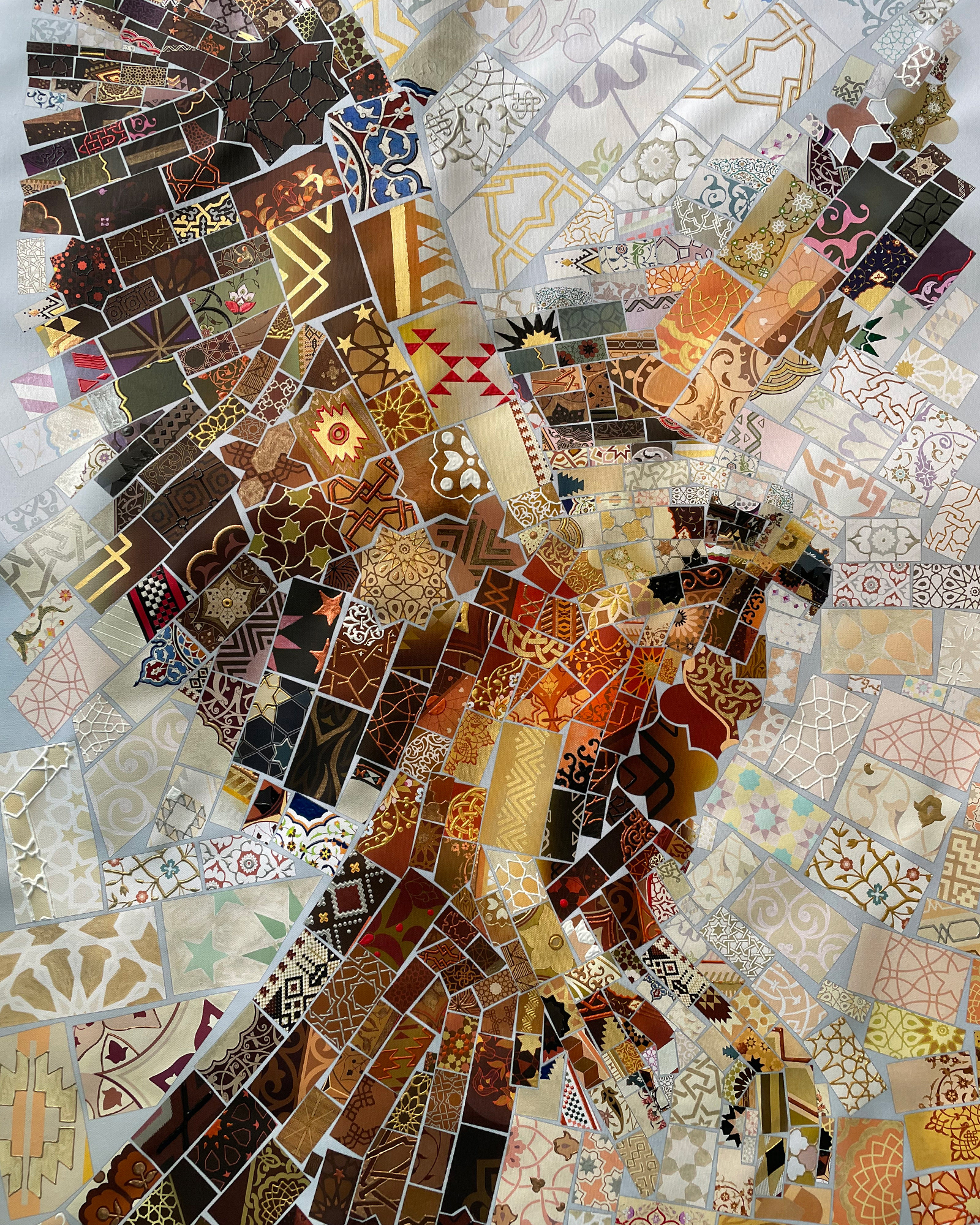
The Exhibition: Where Art Meets Audience
The Mara'ee Art Exhibition provided the perfect context for these works, creating a space where international artists could engage with Bahraini culture while contributing to ongoing dialogues about contemporary art in the Gulf region. The exhibition's success demonstrates the appetite for sophisticated contemporary art that engages seriously with local traditions and cultural values.
For curators and gallerists interested in contemporary work that bridges digital innovation with traditional craftsmanship, this project offers a model for how such engagements might proceed with proper cultural sensitivity and technical innovation.
Ethereal Elegance:Mosaic Poetry of the Desert Antelope
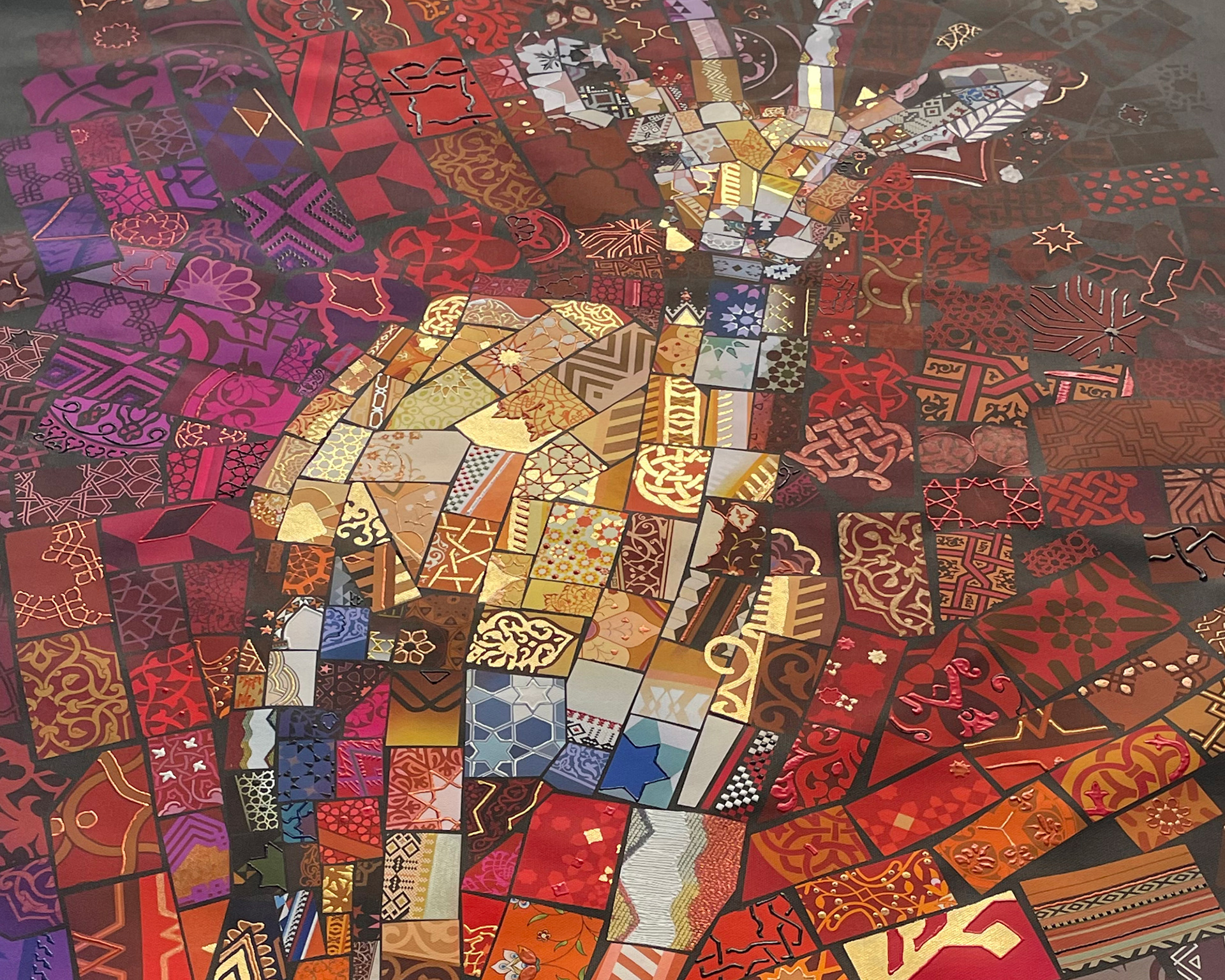

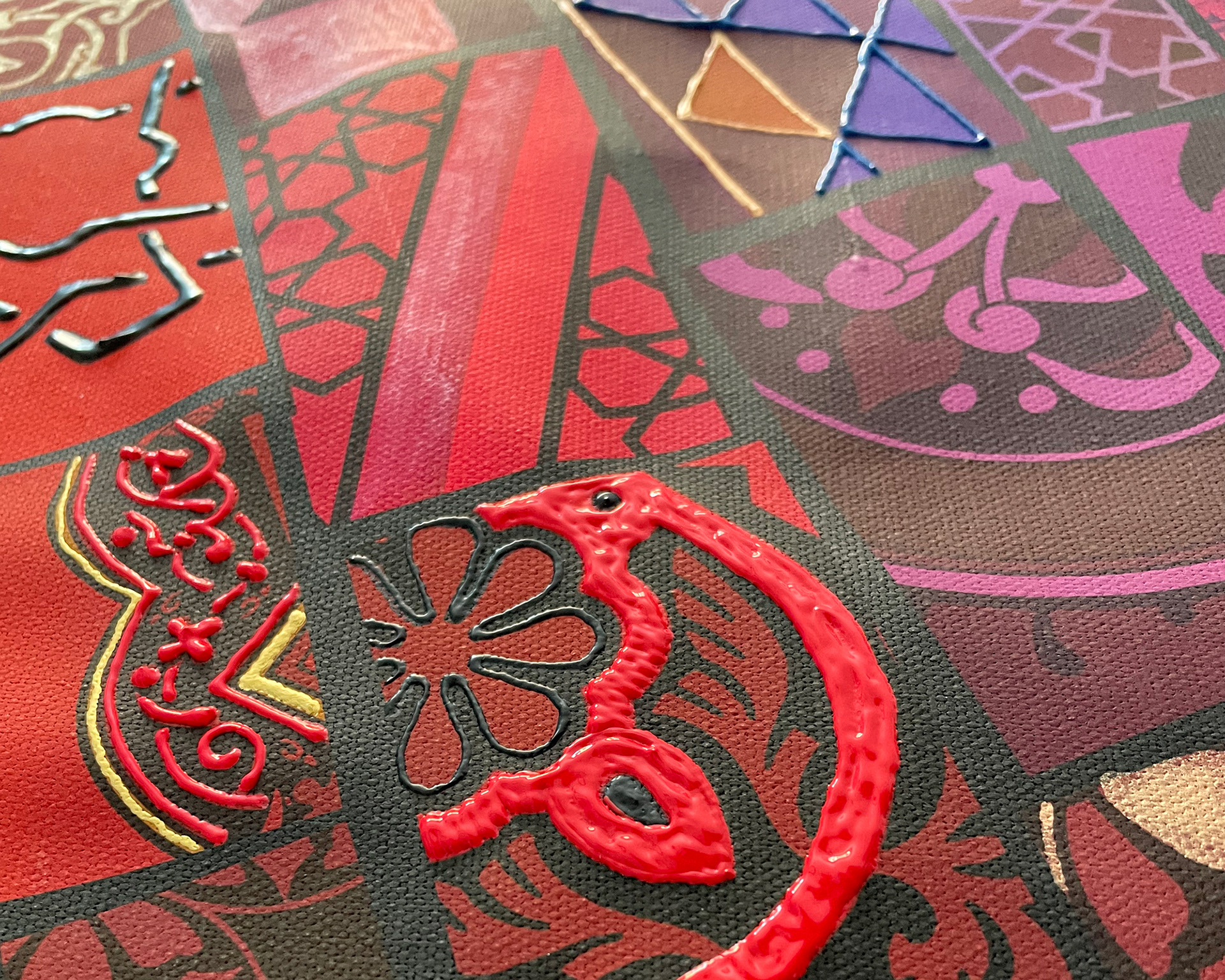
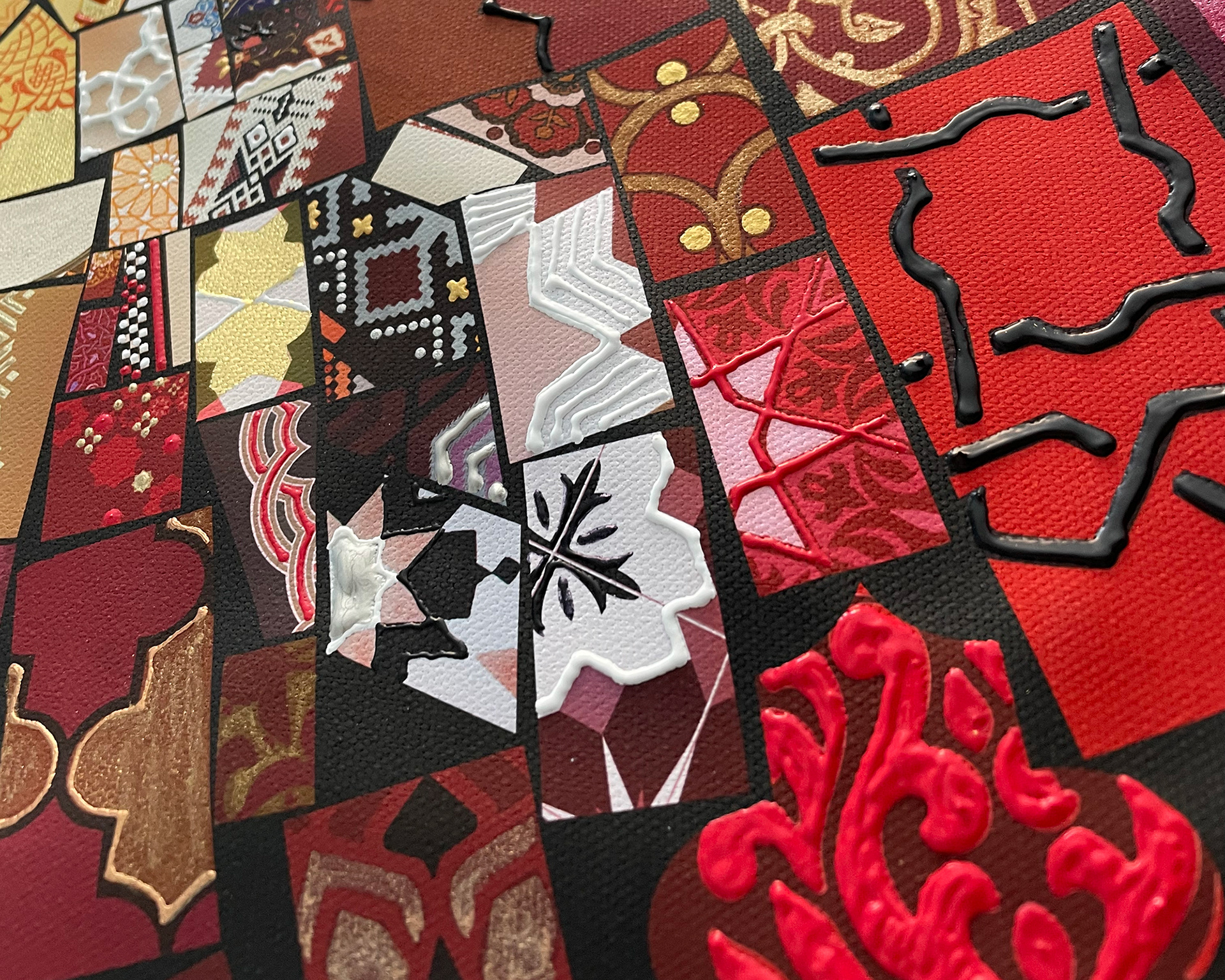
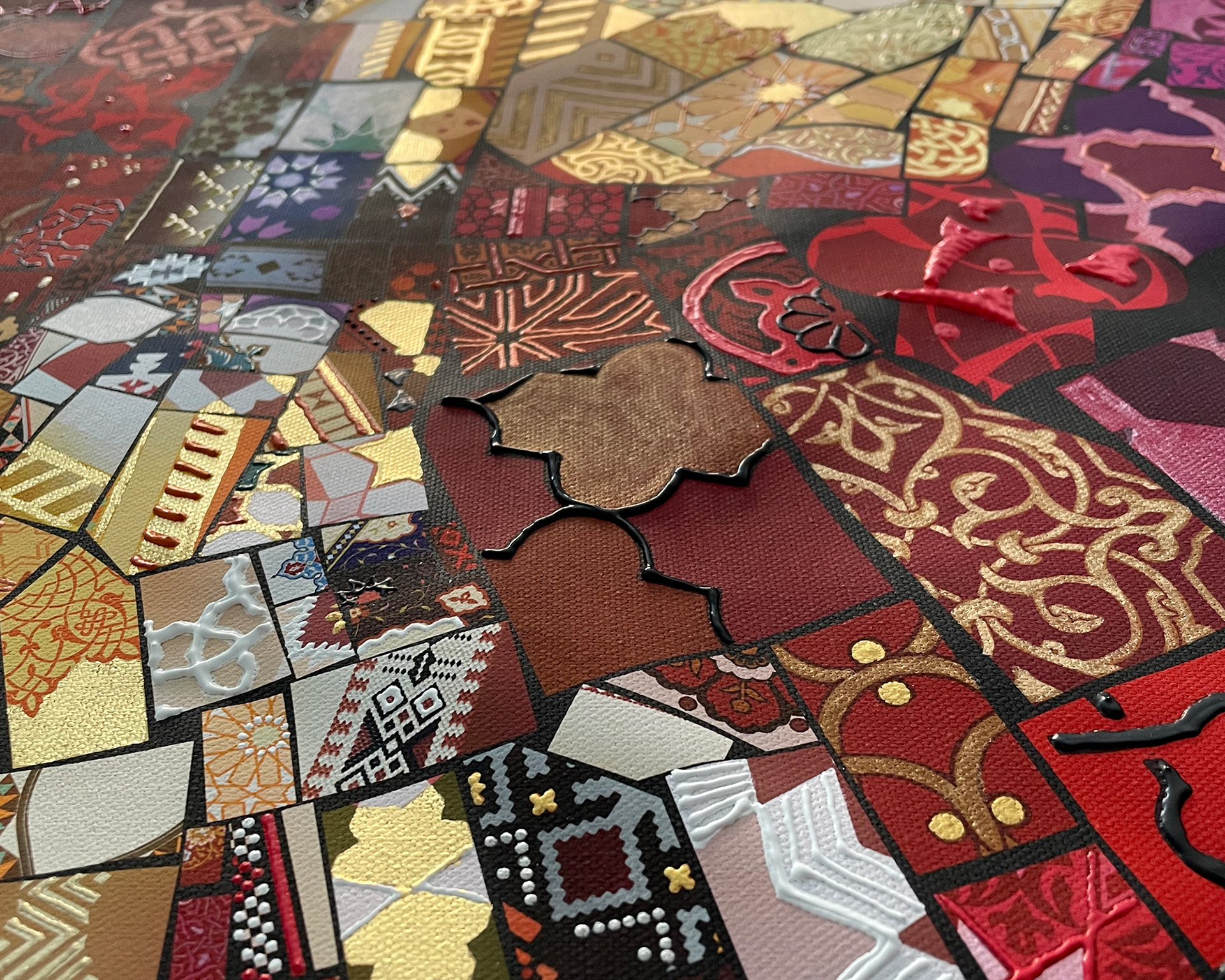
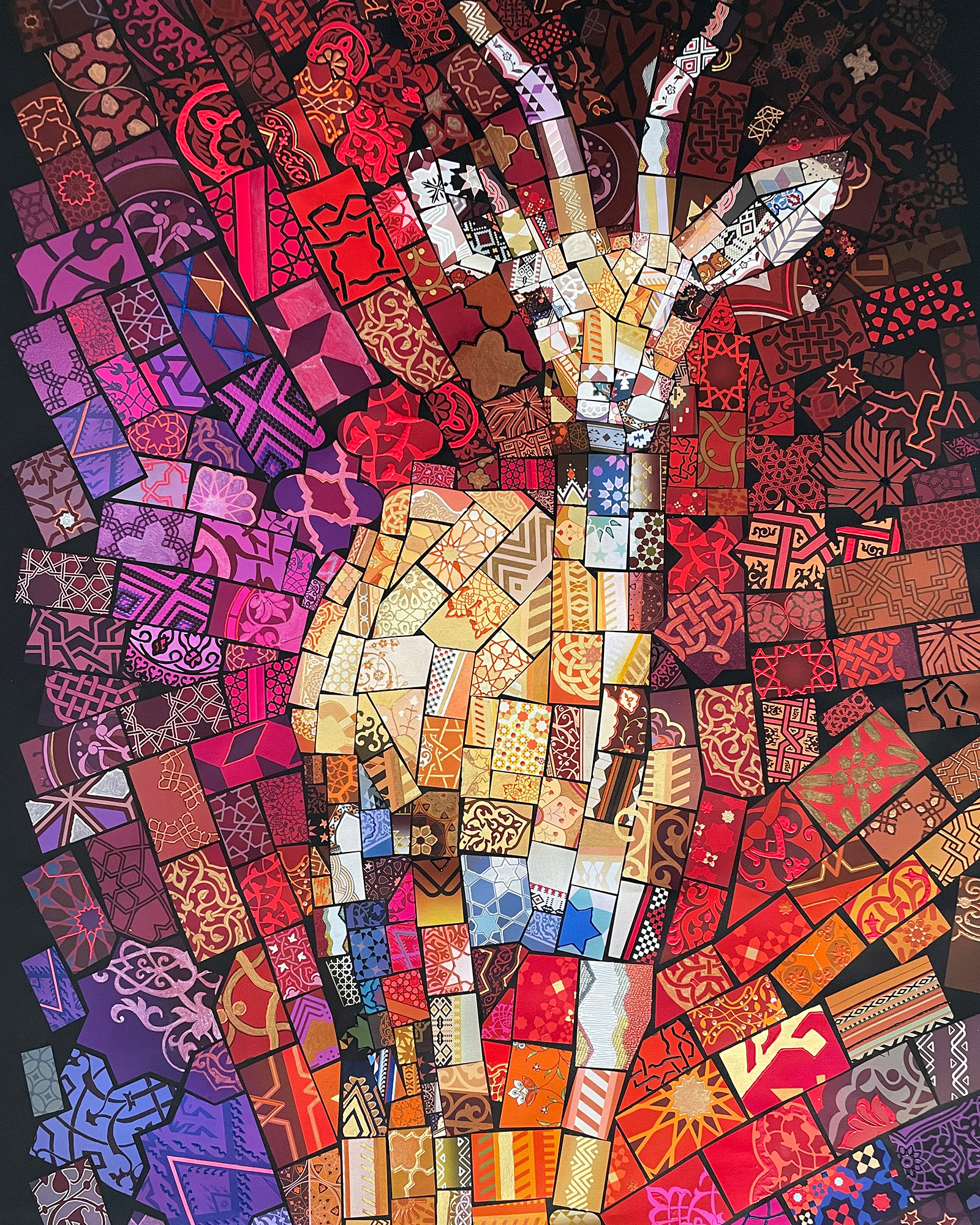
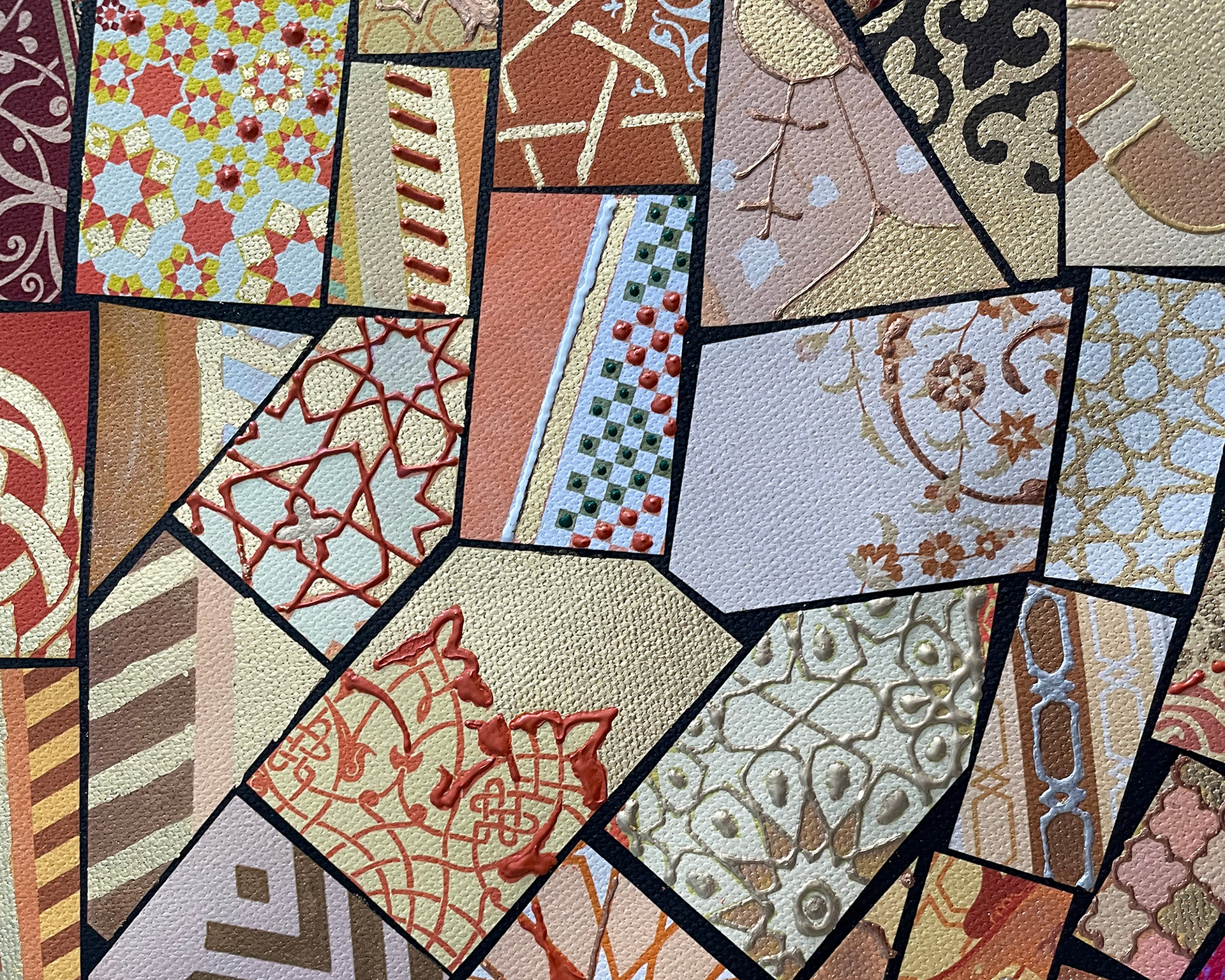

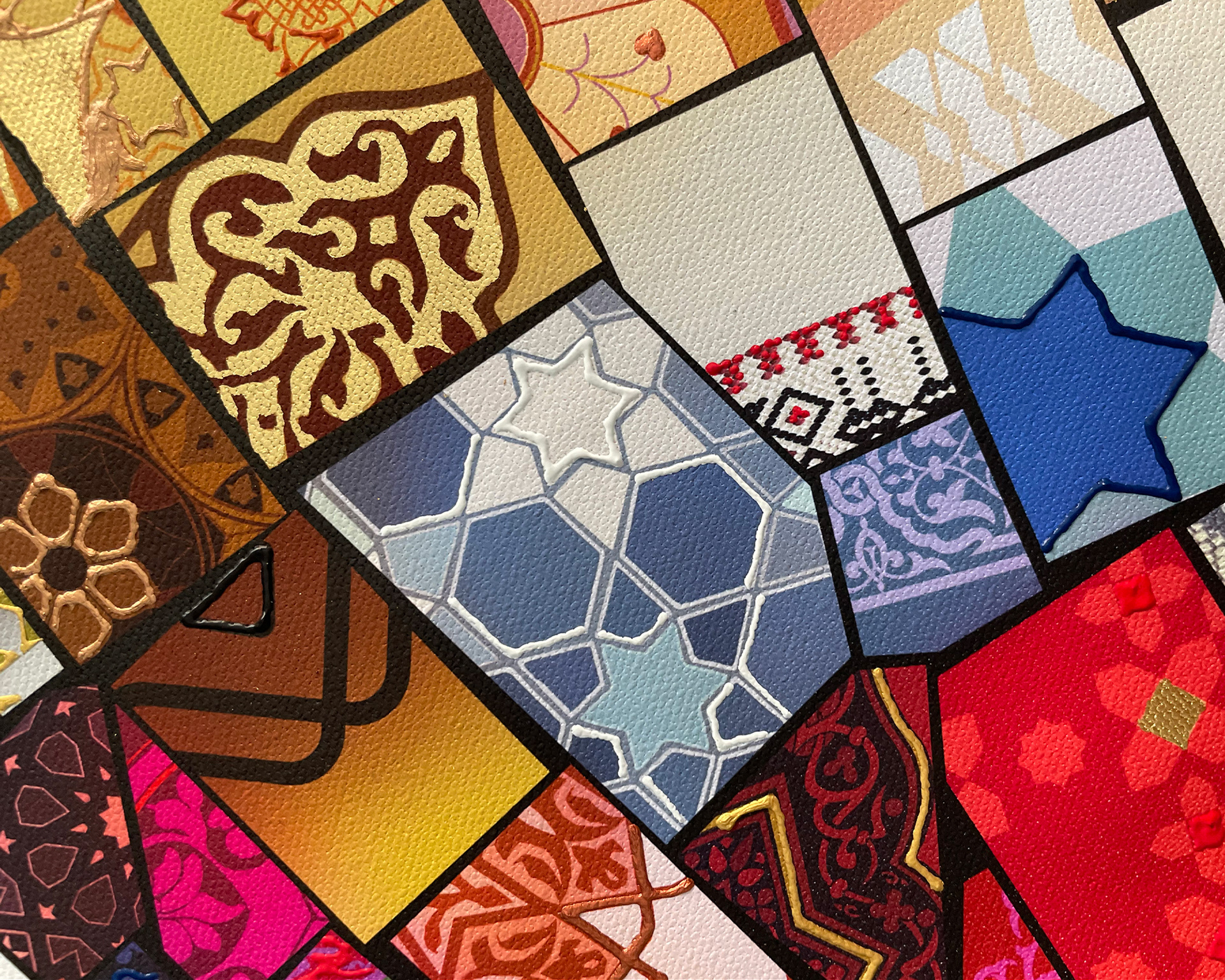
Technical Specifications and Collaborations
Production Partners:
Pico Bahrain: Exhibition coordination and cultural liaison
Bois Art Shop: UV printing on synthetic stone substrates
Fotokinisi: Giclée 12-color printing services
Giusto Manetti: Gold leaf materials and application techniques
Materials:
Synthetic stone substrates
100% cotton canvas
Giclée inks (12-color system)
Giusto Manetti Gold leaf (KTS 32 3/4 100x100 Th. 24gr Light pressed)
Acrylics and Relief Paint for dimensional effects
Metallic art paper for detailed elements
Techniques:
Hybrid digital-analog mosaic construction
Hand-cutting and hand-painting of individual tiles
Laser-cutting for precision detailed elements
Traditional gold leaf application
Mathematical pattern integration algorithms
Digital mosaics details:




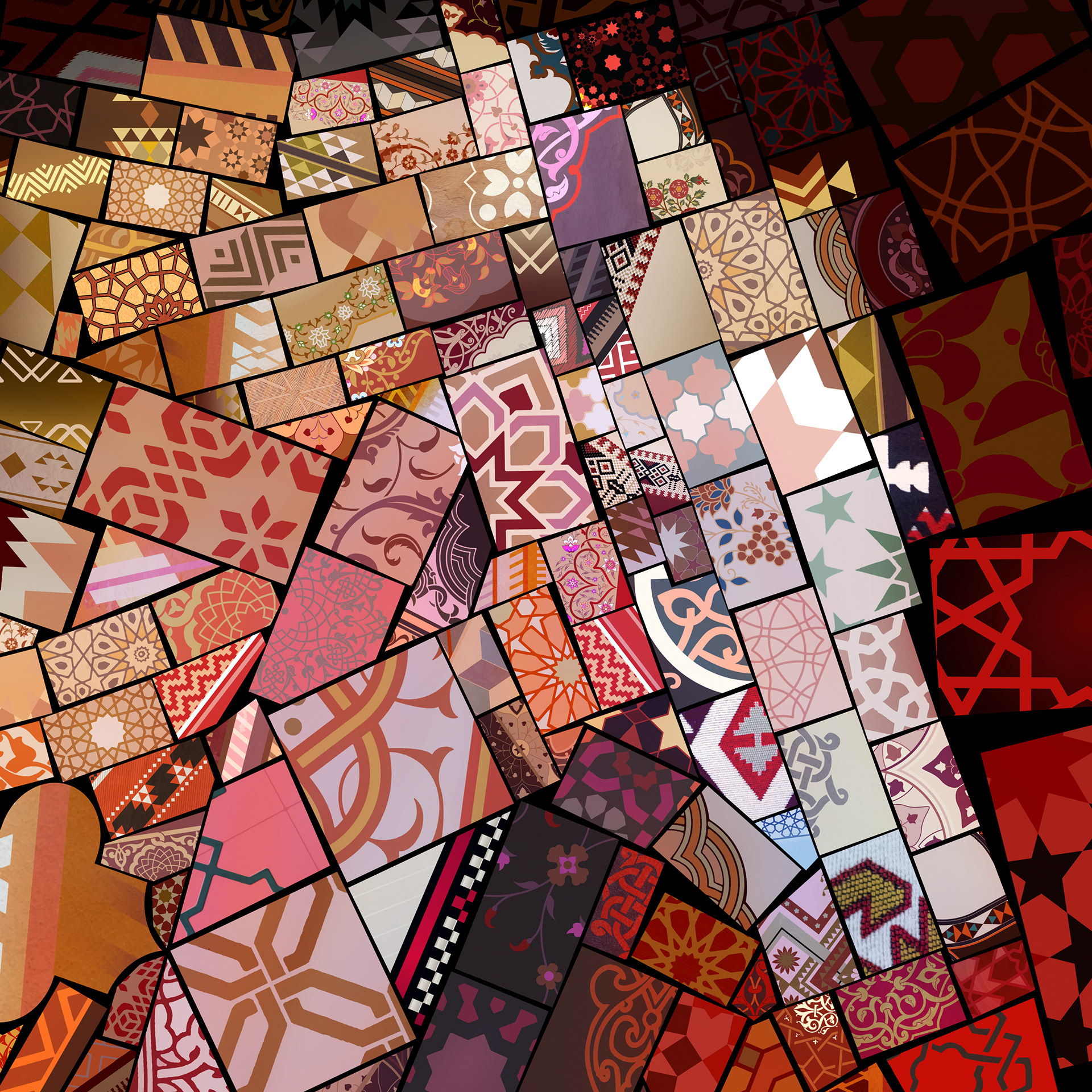
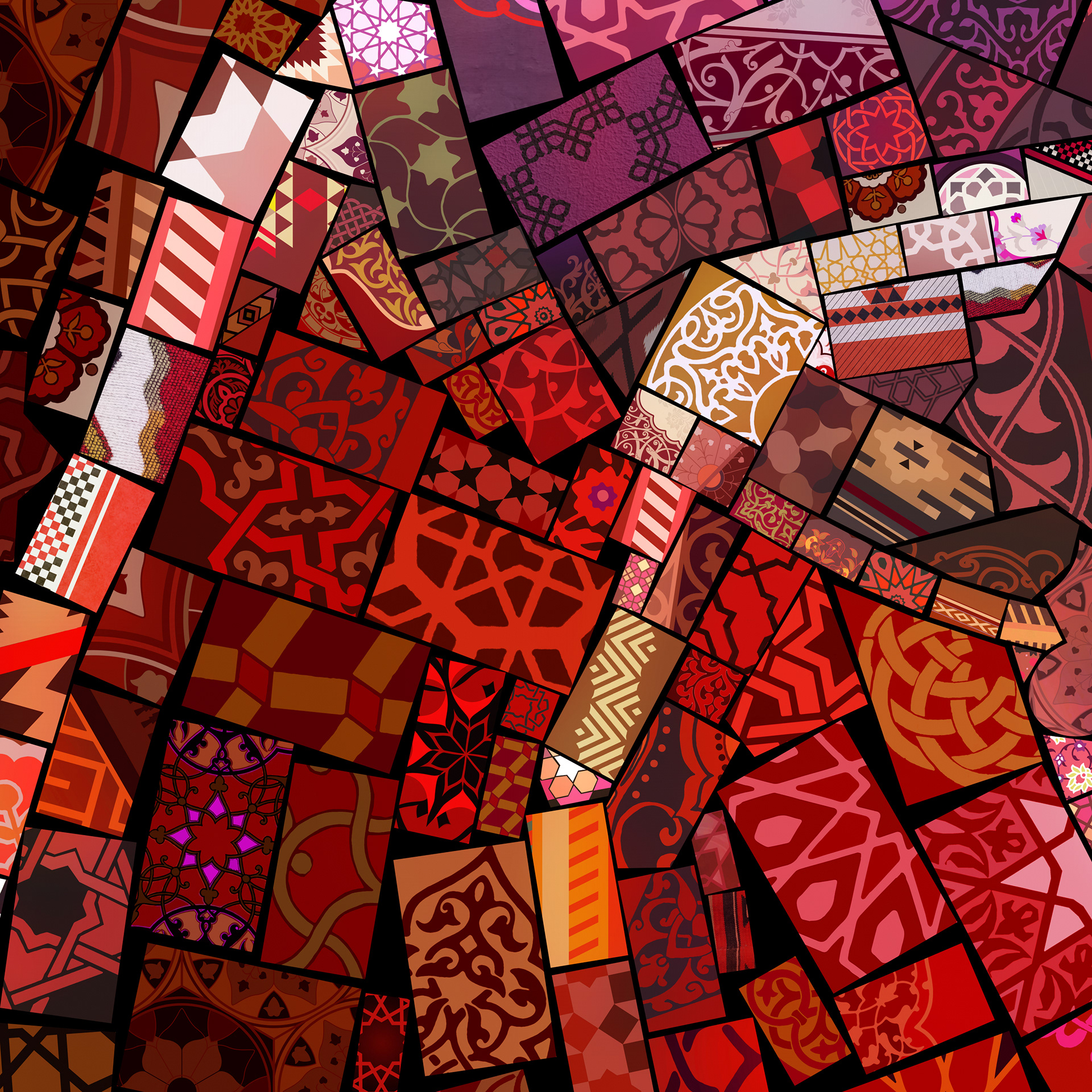

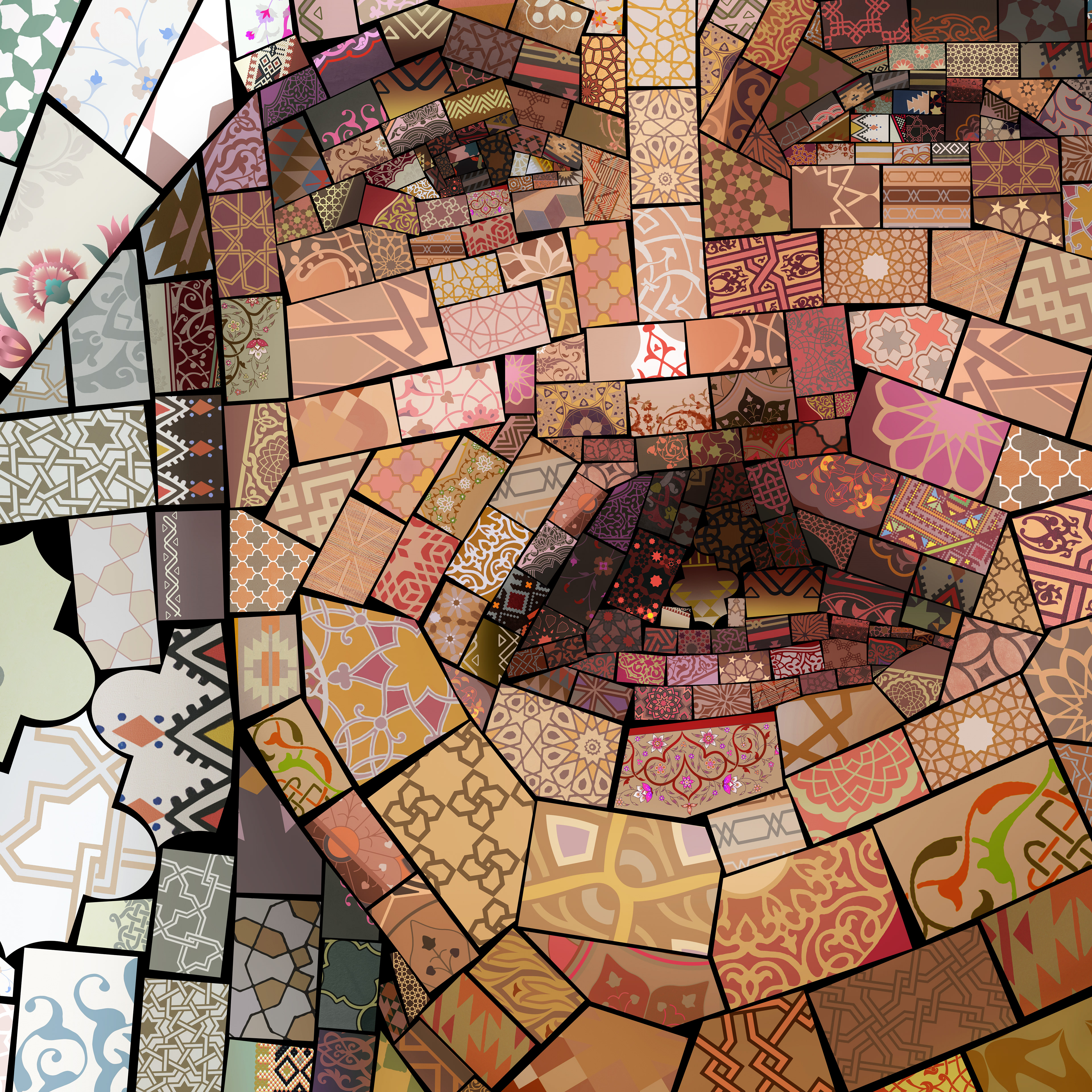
Acknowledgments
Profound gratitude to His Majesty King Hamad Bin Isa Al Khalifa for the honor of contributing to this exhibition, and to the curators of the royal art collection who provided guidance throughout the process. Special appreciation to the Bahraini Ministry of Municipalities Affairs and Agriculture for their support of this cultural initiative.
Deep thanks to Khalid, Lori, Samsu, and the entire Pico Bahrain team for their expertise in facilitating this cross-cultural artistic dialogue. Extended appreciation to all participating artists, curators, and consultants who contributed to this remarkable project.
Recognition to Kleopas, Pambis, and our entire Paphos, Cyprus production team, whose technical expertise made the realization of these complex works possible.
This case study represents one approach to contemporary art's engagement with traditional cultural forms. For curators and institutions interested in similar projects, the methodologies developed here offer replicable frameworks for respectful cultural engagement through contemporary artistic practice.
